
EPA Victoria’s Lee Miezis




THE first landfill levies were imposed in NSW in 1971 and it cost approximately $0.50 a tonne. Since then, several issues have arisen with regards to levies, especially over the past decade when government-imposed waste targets have shown the important role levies have to play if those targets are to be met.
According to the latest National Waste Report C&D and C&I are the biggest waste streams at 81 per cent (43 per cent for C&I, and 38 per cent for C&D).
C&D is easy to recycle. However, large amounts of it have been landfilled because it has been the cheapest option. While that has changed in some states due to an increase in landfill levies, there are still some areas where it is cheaper to put it in the ground rather than reuse or recycle.
A recent seminar titled The Impact of Landfill Levies on the Construction



and Demolition Sector outlined some of the challenges, and possible solutions, to these issues. Chaired by RMIT University’s Dr Salman Shooshtarian, a panel of experts in the sector consisted of Valentina Petrone, associate director, ANZ Circular Economy Lead, WSP; Adam Gray, CEO, Waste & Recycling Industry Association for NT and SA; and Andrew Beckman, C&D health safety community and sustainability manager, Cleanaway.
Beckman is convinced that landfill levies have been a good thing in terms of contributing to a behavioural change in the way C&D waste is managed around Australia.
“These changes are really starting to lead to new and emerging opportunities with improving product stewardship,” he said. “Emerging offtake markets are starting to come forward and there’s a good outlook to improve circularity. However, the rate of growth and changing customer expectations will require the sector
and stakeholders to work together to manage these challenges.”
According to Beckman, one aspect that needs to be considered is that opinions on levies vary depending on where a company sits in the value chain.
“The change is not just about policy, it’s about enabling a platform for us to evolve perceptions of waste management among customers who are increasingly viewing C&D waste management as an integral part of sustainable business practices,” he said.
Beckman said that this strategy allowed the likes of Cleanaway to have conversations and encourage businesses to embrace sustainable and environmentally sound practices. More importantly, it’s moving the sector to a user pays approach across the country. He also pointed out that it is obvious that the lack of harmonisation of levies has shown which states are moving ahead with better recycling rates.
(Continued on page 16)
By Inside WasteDURING the Waste Expo 2022, EPA Victoria’s CEO Lee Miezis spoke about the government watchdog’s first year operating under the state’s Environment Protection Act 2017, which commenced in July 2021. Twelve months later, he was back at the 2023 event to update the waste/resource recovery sector on the activities EPA Victoria undertook over the past 12 months and how it has carried out its responsibilities under the Act.
He reiterated that his department’s role Is to be an independent regulator that works at state, national and international levels to “protect our communities and our environment from the harmful effects of pollution and waste”.
Over the previous year, the organisation focused on four objectives, which were to:
• make Victorians aware of their responsibilities to prevent harm to human health and the environment;
• target priority risks of harm so that the EPA’s inputs are optimised to make the biggest difference;
• integrate environmental public health into everything it does; and
• to strengthen the culture and the EPA’s capability to achieve organisational excellence.
“It’s not just about the activity we did, it’s about our impact,” said Miezis.
“I want to focus on some of those key results we achieved and how we performed against the key performance measures aligned to those strategic outcomes in our strategic plan.”
(Continued on page 23)





Provides Faster Reduction
Astec - Peterson's powerful up-turn 3-stage grinding process provides better fracturing of material and a more consistent product, giving you just the product your buyers are looking for.
Astec - Peterson's patented Impact Release System's air bags provides uniform grinding and protection from contaminated feedstock, a feature unique to Astec - Peterson grinders.
Land clearing, mulch, compost, asphalt shingle tiles, scrap wood, biomass, green waste-we can handle it am
www.komatsuforest.com.au

The Second Line of Defence
Urethane cushions and shear pins help protect the mill from catastrophic damage in the event of a severe impact from contaminants in the feedstock.
Astec - Peterson offers horizontal grinders from 433-839 kW, offering grinding solutions with output at the lowest cost per ton. Visit us at www.astecindustries.com and see why we have been leading the industry for over 35 years!

Astec - Peterson is represented by Komatsu Forest in Australia and New Zealand, providing industry-leading product support and expertise.

Chief Operating Officer
Christine Clancy christine.clancy@primecreative.com.au
Managing Editor
Mike Wheeler
mike.wheeler@primecreative.com.au
Brand Manager
Chelsea Daniel chelsea.daniel@primecreative.com.au
Design Production Manager
Michelle Weston michelle.weston@primecreative.com.au
Design
Blake Storey, Bea Barthelson
Client Success Manager
Glenn Delaney glenn.delaney@primecreative.com.au Head
FOGO has been a hot topic for a while, especially as the 2030 deadline approaches for all councils to be onboard for collecting the waste stream. Let’s not forget that while 2030 seems some time away, the target has shifted once, with the original deadline being 2023. The collection of FOGO can have many beneficial outcomes, including being used as mulch or compost in gardens or fertiliser for the agricultural sector. It makes sense on so many levels to have it collected (I don’t really need to talk about emissions if it gets landfilled, do I?)
This makes this issue’s story out of Catalonia, Spain, about the province’s government rewarding local councils for the amount of FOGO they collect, topical. Of course, there are caveats, such as the quantity and quality of what is being collected. The bigger the amount and the higher the quality, the more money the councils will receive.
Would such a scheme work in Australia? If we pretend for a moment that all the different states and councils agree on the idea in principle, what would be some of the roadblocks? There would be the collection process itself, as well as how it would work practically when it comes to ensuring the quality aspect is there. The
biggest issue is the funding aspect.

Catalonia get its funding? Wait for it –landfill tax revenue. Again, I don’t need to spell out how our industry has time and again wondered aloud why not all the monies (heck, even the vast majority would be nice) collected by landfill levies doesn’t go back to the industry instead of back into the consolidated fund of many state and territory treasuries. The details of how the scheme works are on page 42 of this issue of Inside Waste
Also, in this edition, there is an article featuring EPA Victoria CEO Lee Miezis. Like his counterpart in NSW, Tony Chappel, Miezis strikes a reconciliatory tone with his expectations of the waste and resource recovery industry. He also states that the EPA needs to hold itself accountable to the community by ensuring that there is a transparent scheme in place when complaints are made against EPA staff.
Accountability is a word that is used more often in the waste and resource recovery spaces. It’s good to see that a government department is starting to lead the way.
Happy reading.







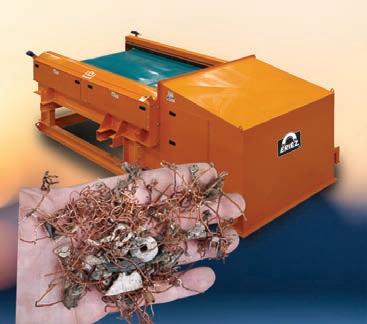






































































































































We’re about to make a big splash in trash, because we’ve just launched a new range of dual control trucks. With lower tare weights than similar models from our competitors, these new trucks can carry bigger payloads. Up to 300kgs per trip! Apply that across a fleet and you’ll see huge boosts in e ciency and reduced operating costs.
Visit isuzu.com.au/waste

















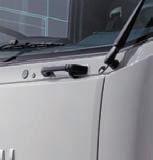







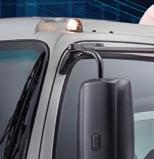









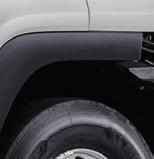








































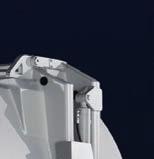
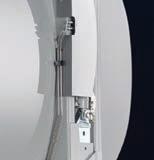

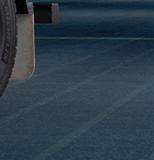








WASTEWATER treatment in Melbourne’s west is about to be transformed due to a $711 million investment to modernise the plant to ensure the health and sanitation needs of Victoria’s growing population are met for generations to come.
Minister for Water, Harriet Shing, announced the start of works on a new Resource Recovery and Re-Use Complex – the first major milestone in the modernisation of the Western Treatment Plant.
Melbourne’s population is set to double by 2050 and the upgrade to the Western Treatment Plant is key to ensuring Melbourne’s infrastructure is equipped to meet future demands.
The project will deliver an additional 95 billion litres per year in primary treatment capacity.
The Western Treatment Plant is an environmentally-friendly sewage treatment, and one of Victoria’s most

transformed Melbourne’s public health and sanitation – now it processes more than 182,500 million litres every year while using a low-cost, low-energy treatment processes.
carbon, and manage waste sustainably. These improvements, including updated treatment methods and waste management facilities.
“Innovation and efficiency in wastewater treatment has enabled Victoria to lead in adaptation to climate change, our circular economy and delivering large-scale improvements to liveability,” said Shing.
And better wastewater treatment means we’re also well-equipped to manage the challenges of population growth.”
Melbourne Water managing director, Dr Nerina Di Lorenzo, sees the long-term benefits.
When it was first established in the 1890s,
The Resource Recovery and ReUse Complex will enhance sewage treatment, minimise odours, capture

“The Resource Recovery and Re-Use Complex is a major milestone in the transformation of the Western Treatment Plant and will enable rapid evolution of the site to meet the needs of the next decade and beyond” she said.















The Impaktor 250 evo is the perfect combination of shredder and crusher. Its compact dimensions, low weight, and quick setup times make it a game changer in waste processing efficiency.
For those interested in sustainable waste management, explore the possibilities with the ARJES Impaktor 250 evo.
T: 1300 859 885

E: sales@triconequipment.com.au
www.triconequipment.com.au




THE Federal Court has convicted and sentenced waste management companies BINGO Industries, and Aussie Skips Bin Services and Aussie Skips Recycling (together, Aussie Skips) for criminal cartel offences under sections 45AF and 45AG of the Competition and Consumer Act relating to a price fixing arrangement for demolition waste services in Sydney.
BINGO’s former managing director and CEO, Daniel Tartak, and Aussie Skips’ former CEO Emmanuel Roussakis, were also convicted and sentenced.
These prosecutions were brought by the Commonwealth Director of Public Prosecutions (CDPP), following an investigation and referral by the ACCC.
BINGO was fined $30 million and Aussie Skips was fined $3.5 million after each company pleaded guilty to having fixed and increased prices with the other for the supply of skip bins and the provision of waste processing services for building and demolition waste in Sydney.
BINGO’s fine of $30 million is the second largest fine imposed for criminal cartel offences under the Competition and Consumer Act.
Tartak was sentenced for two criminal cartel offences to two terms of imprisonment of 18 months each, to be served concurrently over two years as an intensive correction order, including 400 hours of community service. Tartak was also fined $100,000 and banned from managing corporations for a period of five years.
Roussakis was sentenced to 18 months’ imprisonment for one criminal cartel offence, to be served as an intensive correction order, including 300 hours of community service.
Roussakis was also fined $75,000 and banned from managing corporations for a period of five years.
In imposing these sentences, the Court took into account the early guilty pleas of each of the offenders.
This brings to a close an extensive investigation by the ACCC into cartel conduct in the building and demolition waste services industry in Sydney.
“The sentences handed down should serve as a strong reminder that criminal cartel conduct is a serious offence attracting serious consequences, including criminal convictions, significant fines, banning orders, and potential imprisonment for individuals,” ACCC Chair Gina Cass-Gottlieb said.
“Cartel conduct is illegal because
it increases the prices consumers and businesses have to pay, and restricts healthy competition and economic growth.
“We will continue to investigate cartel conduct and refer appropriate matters to the Commonwealth Director of Public Prosecutions for consideration of criminal prosecution.
“We encourage anyone who observes anti-competitive conduct in their industry or workplace to contact the ACCC confidentially.
“We will review their concerns and take action if warranted.
“We have special arrangements for anyone who wants to anonymously report cartel conduct, via a secure third-party platform that protects their identity and by anonymously calling our dedicated hotline.”
In delivering judgment, Justice Wigney said, “Cartels are widely condemned as the most egregious forms of anti-competitive behaviour. At its heart a cartel is an agreement between competitors not to compete. Cartel conduct harms consumers, businesses, and the economy, and is likely to increase prices, reduce choice and distort innovation processes.”
Justice Wigney also observed that the price-fixing arrangements between BINGO and Aussie Skips “had the effect of suppressing and distorting price competition in respect of collections services and processing services in the Sydney metropolitan region or a significant part thereof.
“The markets for collections services and processing services in that region were large and lucrative.
“The effect of the cartel conduct was that some consumers of collections services and processing services in that region were likely to have paid more for those services than they otherwise would have.”
The cartel operated between May 2019 and August 2019, with BINGO and Aussie Skips agreeing to fix prices for their waste collection services and waste processing services in Sydney from 1 July 2019.
Current BINGO Chief Executive Officer, Chris Jeffrey, said that BINGO has learned from the experience and that it is now a materially different company than it was when the matter occurred.
“We’ve got a new owner, a new board, a new chair and a new executive team,” he said.
“Since the matter occurred close to five years ago, we’ve significantly improved our focus on governance and compliance.
“We’ve undertaken a comprehensive review of our internal processes and implemented enhanced compliance training programs to ensure the situation is never repeated. This includes:
• Improved protocols for dealing with competitors (who can also be customers of the business).
• Improved protocols for issuing price



change communications.
• Regular competition law training for all sales staff.
• Internal quality assurance reviews.
During the course of the proceedings, the CDPP acknowledged the improvements BINGO had made to its governance processes.
“We’re pleased to put this matter behind us. Our focus remains on achieving our vision of a waste-free Australia and assisting in the transition to a circular economy,” Jeffrey said.

Secure your spot at the industry’s leading waste management conference. This is a must attend event and spaces are filling fast.
•Hear industry experts debate and discuss the latest waste management issues
•Visit the extensive indoor and outdoor exhibition
•Network with like-minded waste professionals over 3 days and at 3 social events
•Watch the live broadcasts in real time or at a time convenient for you
•Participate in interactive workshops and panel discussions
•Attend the equipment and technology expo to see equipment on display
With a jam packed program that includes industry renowned keynote presenters, 4 streams of comprehensive educational content, concurrent panel discussions, interactive workshops and 3 social events, this is an industry event not to be missed!
www.coffswasteconference.com.au
(02) 6583 8118 | 0474 629 908
Major Sponsors: Hosted By:
Supported by:

Organised by:



ORGANICS PROCESSING EQUIPMENT YOU CAN RELY ON
• WINDROW TURNERS

• SH REDDERS
• STAR SCREENS
• DRUM SCREENS












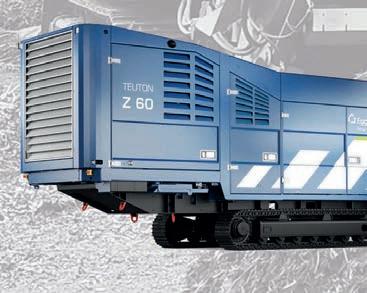











SALES TECHNICAL SUPPORT SPARES


INDUSTRY-LED voluntary schemes will fail to address the environmental risks arising from battery disposal said a spokesperson from Total Environment Centre (TEC), on releasing a plan for urgent regulation to establish an effective, mandatory product stewardship scheme to safely collect and recycle all battery types in Australia.
“We need to act now to address the growing fire risks and waste of recyclable resources,” said TEC Campaigner, Mark Zihrul.
“With over 200,000 tonnes of batteries reaching end-of-life every year, our plan highlights the failures of the current system and calls on the federal government to implement full industry coverage. We need to prevent some businesses not participating (free-riders) and ensure funding for maximum collection with mandatory recovery and recycling targets. This is the only way batteries can flow through the circular economy safely and efficiently. It includes a ban on landfilling batteries.
“The voluntary industry-led
schemes, like Mobilemuster and B-cycle, have dismally low collection rates (12 per cent), and do not cover the majority of hazardous batteries on the market, such as those embedded in vapes, e-bikes and EVs. Enforceable regulations are required to ensure all batteries, including lead acid, EV and home storage batteries, are covered by a single scheme, rather than the voluntary, multiple schemes we now have.
“We were pleased to see the NSW EPA also recently call for action.
“A state-led approach could push things along.”
The Australian Council of Recycling has reported fires caused by batteries are now widespread across mixed recycling facilities, in waste and recycling trucks, and in depots. In May 2023, the CSIRO reported that there is an “urgent need to enhance collection rates to capture the embedded value of the materials that remain in a battery at end of life, minimise hazardous waste and fire risks to users and the public associated with incorrect disposal”.














Standard Inclusions



This year really has started with a bang (and not exactly a good one). I moved from discussing the risks that batteries pose, to another battery-related fire in a facility (or truck), to constantly being in dialogue with governments about the risk that incorrect classification and chemicals present on the sector’s ability to make safe recovered products.
all know what needs to be done. Take less, use it better and make it last longer.
Environment Ministers will meet for the second time this year on 7 December, following the rst 2018 Meeting of Environment Ministers (MEM) in April, which was in part a response to the import restrictions driven by China’s National Sword Policy and the e ects this policy has had across the Australian waste and resource recovery (WARR) industry. Key decisions derived from the April MEM
None of these topics are good news for our essential industry or the community at large. However, in many ways I feel like this is the conversation we needed to have if we really are bona fide in creating a circular economy
•Reducing waste generation, endorsing a target of 100% of Australian packaging being recyclable, compostable or reusable by 2025, and developing targets for recycled content in packaging.
• Increasing Australia’s domestic recycling capacity.
• Increasing the demand for recycled products.
• Exploring opportunities to advance waste-to-energy and waste-to-biofuels.
Since 2018 we have talked often and loudly about plastic. A worthy topic given the damage that both fossil fuels and the lifecycle of plastics are doing to the planet. However, plastic accounts for a relatively small fraction of the 74 million tonnes of waste we generate annually in Australia.
The Government needs to bite the bullet. Adopt the European Union Waste Directives. It is proven to work. The Directives have delivered better environmental outcomes for Europe and they can work in Australia too.
The Directives set the basic concepts and definitions related to waste management and resource recovery – and remarkably – they are commonsense. It requires that waste be managed:
• without endangering human health and harming the environment;
• without risk to water, air, soil, plants or animals;
• without causing a nuisance through noise or odours; and
• without adversely affecting the countryside or places of special interest.
industry however the Queensland Government has embarked on the development of a waste management strategy underpinned by a waste disposal levy to increase recycling and recovery and create new jobs. The State will re-introduce a $70/ tonne land ll levy in March 2019. There are also strong attempts to use policy levers (levy discounts and exemptions) to incentivise the use of recycled material and make it cost competitive with virgin material. However, little has been done to establish new markets and Government has not taken the lead in the procurement of recycled material. There are grants available for resource recovery operations in Queensland although no monies have been allocated to assist in 2018. This is troubling as Queensland rolled out its Container Refund Scheme on 1 November, which will likely impact the cost and revenue models of the State’s MRFs – as we have seen most recently in NSW.
The Directives introduced the polluter pay principle and extended producer responsibility – exactly what we need here, with the EU evidence being that recycling and reuse go up, following this and disposal goes down.
•Updating the 2009 Waste Strategy by year end, which will include circular economy principles.
What this discussion has highlighted is just how difficult it is to recover and recycle in the absence of design requirements (from polymer standards to chemical inclusions), extended producer responsibility obligations (to fund and manage its lifecycle) and only limited to no market demand for this recovered material.
It is time to take stock and examine what has been achieved since these decisions were announced. Now, seven (7) months may not seem like a long time, however in that time we have seen further markets close (Malaysia, Indonesia, Vietnam) and if you are an operator under continued nancial stress, seven (7) months could make or break you.
And no matter how hard we hope that all these elements will one day magically fall into place, they simply will not – the packaging system proved that.
Regrettably with all the effort of respective governments over recent years to address plastics (single-use plastic bans implemented, container deposit schemes introduced, export restrictions, Recycling Modernisation Funding) we have barely moved the dial. The Australian Plastics Flows and Fates report states the national plastic recovery rate was just 14 per cent for 2020/21 – up from 11.8 per cent in 2016/17 – a growth rate of less than one per cent a year. The tap needs to be turned off at the source, and the producer made to sit at the table.
Following the April MEM, we have had three (3) states step in with varying degrees of nancial assistance for industry (councils and operators). This should be expected considering almost all states (except Queensland and Tasmania) have access to signi cant waste levy income each year. On the eastern seaboard, Victoria has approximately $600 million in waste levy reserves in the Sustainability Fund and NSW raises more than $700 million per annum from the waste levy. There is certainly no lack of funds that can be reinvested into our essential industry.
In many ways managing plastics in Australia is a dress rehearsal for some of the more challenging and problematic materials that continue to circulate in Australia, such as PFAS and asbestos. I worry governments have not yet learnt the lessons.
For example, a recent research report on municipal waste by the European Parliament found that four countries have already reached or exceeded the 2030 target to recycle or reuse 60 per cent of municipal waste (Germany, Bulgaria, Austria and Slovenia). Under the EU Landfill Directive, countries must also reduce the amount of municipal waste sent to landfill to less than 10 per cent by 2035. The latest figures show the share of landfill in the EU has decreased from 24 per cent in 2017 to 18 per cent in 2020. They are on track. On plastic packaging, the EU recycled 64 per cent in 2021 and recovered 80 per cent. This compares with 22.4 per cent in Australia for 2020/21. It’s clear the waste directives are working.
The Western Australian Government set up a Waste Taskforce in direct response to the China National Sword. As part of this announcement, the State Government urged all local councils to begin the utilisation of a three (3)-bin system - red for general waste, yellow for recyclables and green for organic waste - over the coming years to reduce contamination. While this taskforce is a step in the right direction, we are yet to see any tangible results from it or any funding for industry. In October, the WA Waste Authority released its draft Waste Strategy to 2030, which comprises a comprehensive and detailed roadmap towards the State’s shared vision of becoming a sustainable, low-waste, circular economy.
Meanwhile, in Australia we have a long way to go. For example, we are yet to ban PFAS, something the EU did more than 20 years ago. Whereas we plan to commence this in 2025. Yet we continue with products placed on supermarket shelves in everything from food packaging and non-stick cookware through to dental floss and makeup. However, EPAs across the country require PFAS levels in organic material so low that it is not possible to comply. If it’s such a problem, why isn’t it banned completely at source? And why have we not been given the support to reject and charge for wrongly classified material being sent to recyclers? We need to share the risk and the cost with those that produce!
The reality is that we can’t manage what we can’t see.
Funding helps but as we know, the money goes a much longer way with Government support and leadership, as well as appropriate policy levers.
And trust me, simply coming down heavily in a regulatory sense on the WARR industry again and again may be good for media, but does not solve the problem of these substances circulating.
The waste and resource recovery (WARR) industry must stop being the whipping boy for problematic goods placed on the market with limited responsibility and questionable care, and rather be included in solving these structural issues.
Victoria has arguably been the most active and earnest in supporting the industry post-China, with two (2) relief packages announced to support the recycling industry, valued at a total of $37 million. The Victorian Government has also gone above and beyond all others states by announcing it would take a leadership role in creating market demand for recycled products.
In 2024, there is no excuse for any company, manufacturer or importer to place something on the market that cannot be safely recovered. And given it seems that businesses are not going to do it themselves – and to be honest why would you be first mover – government must step in.
As we hurtle towards 2030, the only thing we appear to be hurtling towards are more cross-jurisdictional, multilateral working groups and roundtables. We honestly do not need more meetings. We need action.
Government announced a $12.4 million support package comprising $2 million of additional expenditure, $5 million additional funding for a loan scheme, together with targeted funding from the Green Industries SA budget. The Government has also o ered grants for recycling infrastructure.
We know 50 per cent of global carbon emissions, and 90 per cent of global biodiversity loss and water stress, are caused by resource extraction and processing. We
Following the MEM in April, Australia now has a new Federal Environment Minister, Melissa Price, who in October reiterated to media MEM’s commitment to explore waste to energy as part of the solution to the impacts of China’s National Sword, which is troubling (EfW is not a solution to recycling). The Commonwealth has also backed the Australian Recycling Label and endorsed the National Packaging Targets developed by the Australian Packaging Covenant Organisation (APCO), which has to date, failed to incorporate industry feedback in the development of these targets. To the Commonwealth’s credit, there has been signi cant coordination in reviewing the National Waste Policy, with the Department of Environment bringing together industry players and States during the review process.
All these issues must be dealt with appropriately by the entire supply chain – not just by us at the end of the proverbial road. And this doesn’t just apply to hazardous or toxic materials. It applies to all materials and products that must be designed well with recoverable, reusable and repairable materials/designs. That’s the point of the Directives. That’s why we are screaming out for them. Without them we have no hope of hitting 80 per cent by 2030.
The updated Policy will now go before Environment Ministers on 7 December. The Commonwealth can play a key role – one that goes beyond the development of the National Waste Policy. WMAA is supportive of the Federal Government maximising the levers it has, including taxation and importation powers, to maintain a strong, sustainable waste and resource recovery industry.
As Scotland’s Circular Economy Waste Route Map 2030 states “the way that material flows around the economy is complicated and influenced by everyone… achieving this transformation is a shared endeavour.” It goes on to state, “a circular economy can only be delivered through a Team Scotland approach, defined by collaboration and co-design. We can only be successful if everyone plays their part – government, households, communities, charities and businesses”.
This is spot on. It does require a team effort, coupled with strong leadership from government to bring the team together. Who’s ready to sign up to Team Australia?
There may be movement across Australia, with some states doing better than others, but the consensus is, progress is still taking way too long. It is evident that there are funds available in almost all States to assist with developing secondary manufacturing infrastructure, however the only way that this will really happen is if there is government leadership around mandating recycled content in Australia
Gayle Sloan, Chief Executive Officer, WMRR



(Continued from the Cover)
“QUEENSLAND is a great example of this where we’re seeing increased volumes of C&D waste, but there is limited capacity to handle the volume,” he said. “The problem is further compounded in areas where infrastructure is expensive and difficult to build.”
He believes a harmonised approach is needed so businesses can take onboard changes, which will allow them to minimise the waste that they generate. Without this approach, the sector will face challenges with customer, government and community expectations.
One action Beckman has noticed recently is that some demolition companies are repurposing waste onsite. This includes rubble/bricks being used as backfill, and processing timber for reuse. And while he sees this as a good start in terms of recycling at the source, it’s not as straight forward as it could be.
“While these approaches are
supporting increased diversion rates from landfill, we still see some challenges,” he said. “[This includes] limitations in cost-effective technology to enable this activity. Typically, this approach is unlimited to traditional C&D waste types, and the cost impact to customers really outweighs the benefits. Onsite recycling often requires customers to upskill their work teams and change waste management practices. This is particularly true in the residential building market, where we’re seeing new and current customers beginning to engage and discuss how they can adopt a blend of onsite and offsite practices. These requests are driving the rethinking of the skill sets across the C&D sector to provide more education services and ongoing customer support.”
As for the future, Beckman said he has seen other challenges and a rise in expectations from consumers when it comes to how waste is being treated. He said that customers are no longer looking for someone to remove their waste, they’re
looking for a holistic service that demonstrates alignment to their sustainability ambitions. He has noticed more recently that suppliers of products are asking for access to recycled products to use in their manufacturing processes.
Beckman said another issue facing the industry is the lack of availability of sustainable integrated offtake markets at both regional and national levels. He believes the lack of harmonisation across jurisdictional regulations is slowing growth. Investment in the sector, and costeffective technology options to allow for improved customer reporting in a transparent manner, is problematic. However, the landfill levies are doing their bit in changing the landscape.
“These challenges, among others, are making the transition to a circular economy messy,” he said. “While challenges exist, the landfill levies have contributed to behavioural change and customer sentiment towards C&D waste.”
Petrone is an architect by trade, and has a passion about reducing
the impact the building industry has on the environment. It is with this in mind that she spoke about design as it relates to making for a better impact on a circular economy. She believes that designers have a big role to play in making sure they help reduce the amount of C&D waste that is created, and that any products being used are capable of being reused or recycled once their primary use has come to an end.
“As part of a circular economy approach, we want to design out waste in the first place; keep materials in use for as long as possible; and return materials to the system,” she said. “I feel in Australia we’re still missing the link and importance of a circular economy approach in achieving net zero targets and decarbonisation.”
Petrone highlighted how demolition and construction waste play a key role in that transition. She said that Australia is improving the energy efficiency of its assets and shifting to renewable energy. She agrees with Beckman that there has

been a shift in how much waste is being sent to landfill (it is reducing), but producers need to think about the consequences of what will happen at a product’s end of life during the design stage.
“We need to shift from waste reduction and to designing out waste in the first place,” she said. “The landfill levy is a big tool to push the transition, but we really need to go beyond that and look how we can reduce the generation of waste in the first place. It’s easier said than done.”
She said Australia needs to go from a linear to a circular approach where circular design strategies are used, in particular an adaptive reuse approach. This means working with designers, developers, builders, and the demolition contractor on site to help understand what of any existing assets can be salvaged and how that ‘waste’ can be reused in the new design. If some materials are not applicable for the project, then they can be donated to charities or other projects where they might be better suited.
“[We are] looking at opportunities to upcycle and recycle them back into the manufacturing system,” said
Petrone. “We see the importance of pushing in Australia for suppliers and manufacturers offering take back schemes, and even leasing agreements. [It is] important having a market for anything that we are trying to salvage and upcycle into the industry.”
Shooshtarian talked about research that his team conducted between 2018 and 2020. The title of this research paper was the National Economic Approach to Improve Management of Construction Demolition Waste
One of the objectives of the report was to identify economic factors that govern the disposal, reduction and reuse of C&D waste. RMIT partnered with industry and government and put together a survey of 46 questions that garnered responses from 132 participants. Approximately 60 per cent of participants were from the construction industry, waste recovery, and landfill sector.
Interestingly, 36 per cent of research participants said the landfill levy was effective in reducing the amount of waste going to landfill, while 52 per cent found that the different rates between regional
and metropolitan areas was an issue and believed there should be more consistency.
“We also asked for their opinion on how levy rates should be applied across Australia, and more than 62 per cent of participants mentioned that it needs to be applied uniformly and consistently,” said Shooshtarian.
Survey respondents were asked about the adequacy of current levy revenue distribution once it had been collected.
One of the functions of levy revenue is for state governments to distribute it to support recycling activities, fund educational initiatives, as well as fund informal enforcement activities. About 72 per cent of respondents mentioned that the way it works currently is poor and needs to be improved.
Shooshtarian said the survey stated that any increase in levy should be complemented with an effective compliance and enforcement regime; revenue should be allocated to activities that directly improve the risk recovery; and there needs to be an increase in the amount of infrastructure available.
Gray has the unusual brief of being


The JCB range of wheel loaders are built to be strong, reliable and provide comfort for long days in the cab. Designed for ultimate productivity, and offering superb performance the JCB wheel loader range features best-in-class comfort, visibility, safety ergonomics and superior serviceability plus a whole lot more.






responsible for two jurisdictions that cover a large swathe of the country – the Northern Territory and South Australia. Both regions are citycentric compared to most political entities in Australia, which means there are some interesting issues that arise.
For a start, in the Northern Territory there is no landfill levy, while South Australia has one of the oldest levy systems in the country, which currently stands at $156 a tonne in the city and about half of that in regional areas.
Latest data from 2021 shows that South Australia diverted about 83 per cent of waste from landfill. The state’s targets at the time had moved from what was zero waste to zero avoidable waste.
“We were achieving fairly significant diversion in South Australia under the current circumstances,” said Gray. “The language changed slightly within our targets. For MSW (municipal solid waste) the target was around 65 per cent by 2023. C&I was 95 per cent and C&D about 90 per cent. However, diversion two years before that was already sitting at 92.5 per cent for C&D material. We’d already achieved the targets that had been set by the government.”
Gray stated that from 2003-04,
the waste generated through to 2021 had increased by 52 per cent and its recovery rate has also increased. It went from 61.5 per cent recovered to 83 per cent – a 36 per cent increase. This in turn caused landfill disposal to decrease from 1.2 million tonnes to 840 tonnes.
When looking at the various data points Gray asked himself, “does the landfill levy drive recovery in the C&D sector?”
“We started to think about some of the influencing factors that have led to achieving 92.5 per cent diversion in C&D,” he said. “This is in the context of us moving from a fairly linear approach to a diversion from landfill one, which is what our Zero Waste SA Act was targeting in 2004. We’re now looking at a circular economy approach, which is far more complex.”
Gray sees the landfill levy as a
blunt instrument. On its own, it’s not going to get SA where it needs to go. There’s got to be a range of policies and strategies that sit around a levy to help support the state’s circular economy objectives.
“Yes, the landfill levy does contribute,” he said. “No doubt the landfill levy back 10-15 years ago sent policy settings and policy signals to the industry. That was a strong message. ‘We’re working towards









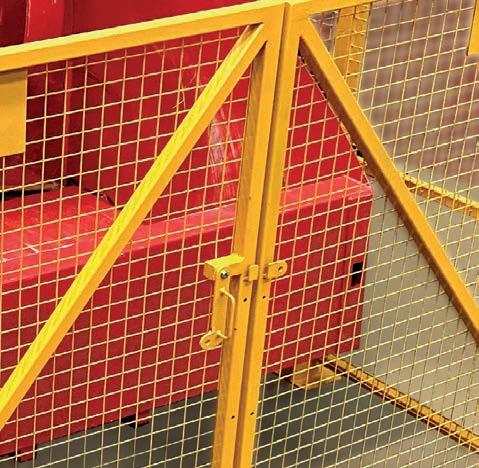

Engineered for efficiency and reliability, our patented design effortlessly handles bulky waste that traditional compactors can't manage. With a powerful 50-tonne packing force and heavy-duty construction, Shark Compactors have the ability to compress many different kind of wastes like domestic wastes, wet wastes, plastics, food wastes, wood, furniture, mattresses, metal, carton, paper & equal materials. Upgrade to Shark Compactor and experience the difference TODAY!
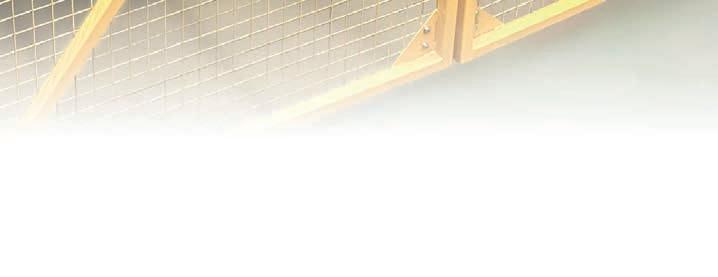


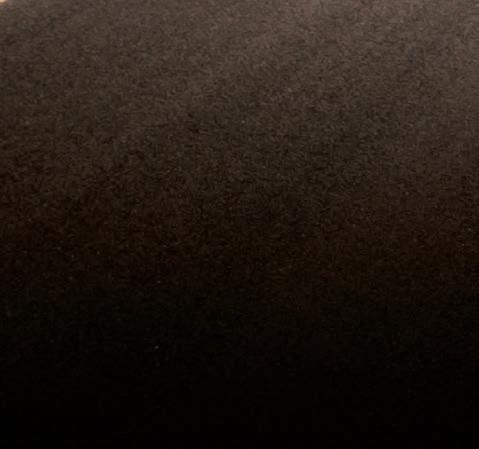



zero waste, and we want you to go on that journey with us’. But we know that landfill levies also artificially make recovery options more profitable.”
His other point is that markets are a key ingredient in making sure people will recycle. Without offtake markets, the incentive to recycle is diminished. He said that markets in South Australia for recycled/reusable C&D products are strong, especially for anything that has calorific value.
Gray said, at the end of the day, South Australia has good markets, a strong levy and it has reasonable processing costs.
“You can start to see why we’re heading towards that 92.5 per cent or even greater diversion rate when we start to deal with some of the other difficult materials we find in our C&D suppliers,” he said.
As for the tyranny of distance for some of the smaller communities in his jurisdiction, he cites the initiatives of companies such as Ntex in the Northern Territory that finds viable solutions, such as on-site processing.
“Companies like Ntex are really
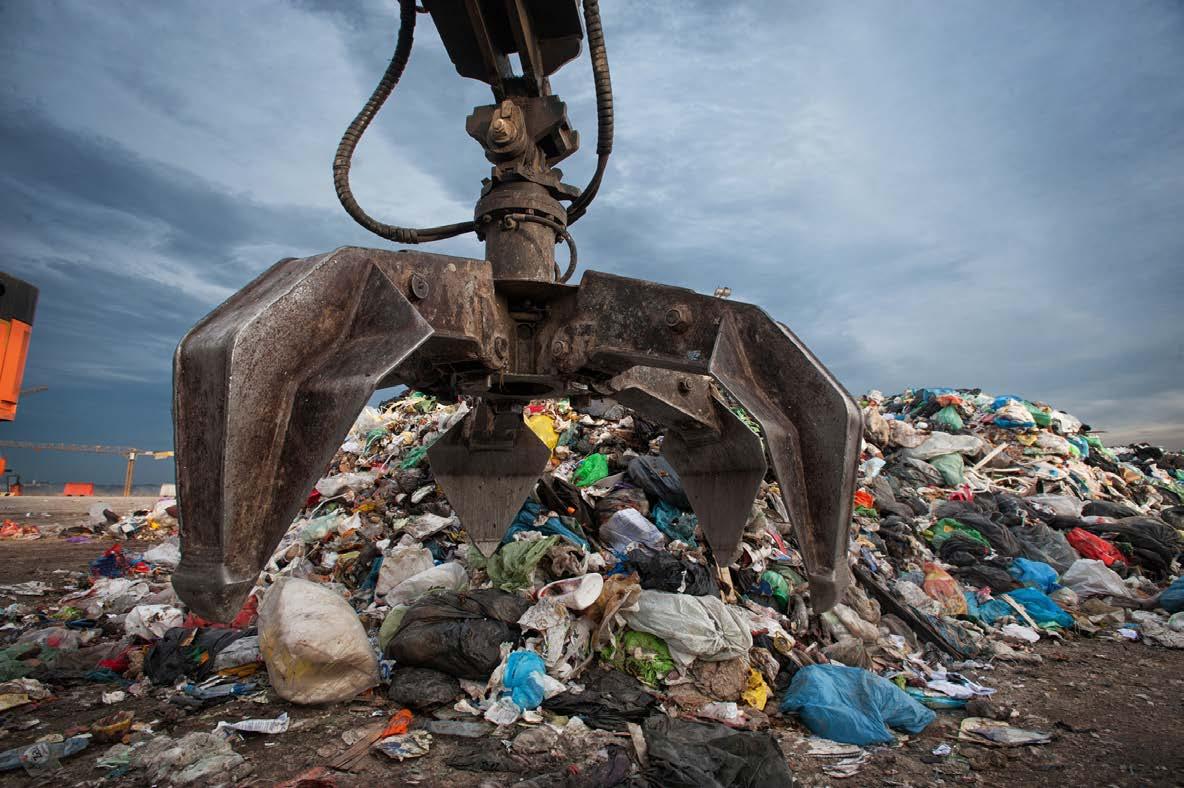
2404_InsideWaste_HalfPage.pdf
1 23/01/2024 8:35:29 AM
championing mobile equipment, onsite processing and on-site reuse of C&D,” said Gray. “They talk to their market about maximising reuse and recovery opportunities in contracts. When they talk to their government about demolishing a building they don’t go to a construction demolition contract, they contract
a construction specialist and a demolition expert separately.”
Gray said this scenario then attracts specialist companies that don’t necessarily work in demolition – they work in deconstruction. Rather than demolishing a site, they’re experts in pulling apart facilities, buildings and demolishing
such infrastructure.
“We’re working with governments and other stakeholders about their procurement practices,” he said. “We not only talk about how they procure construction and deconstruction, but also how they increase their uptake of recycled content materials.”





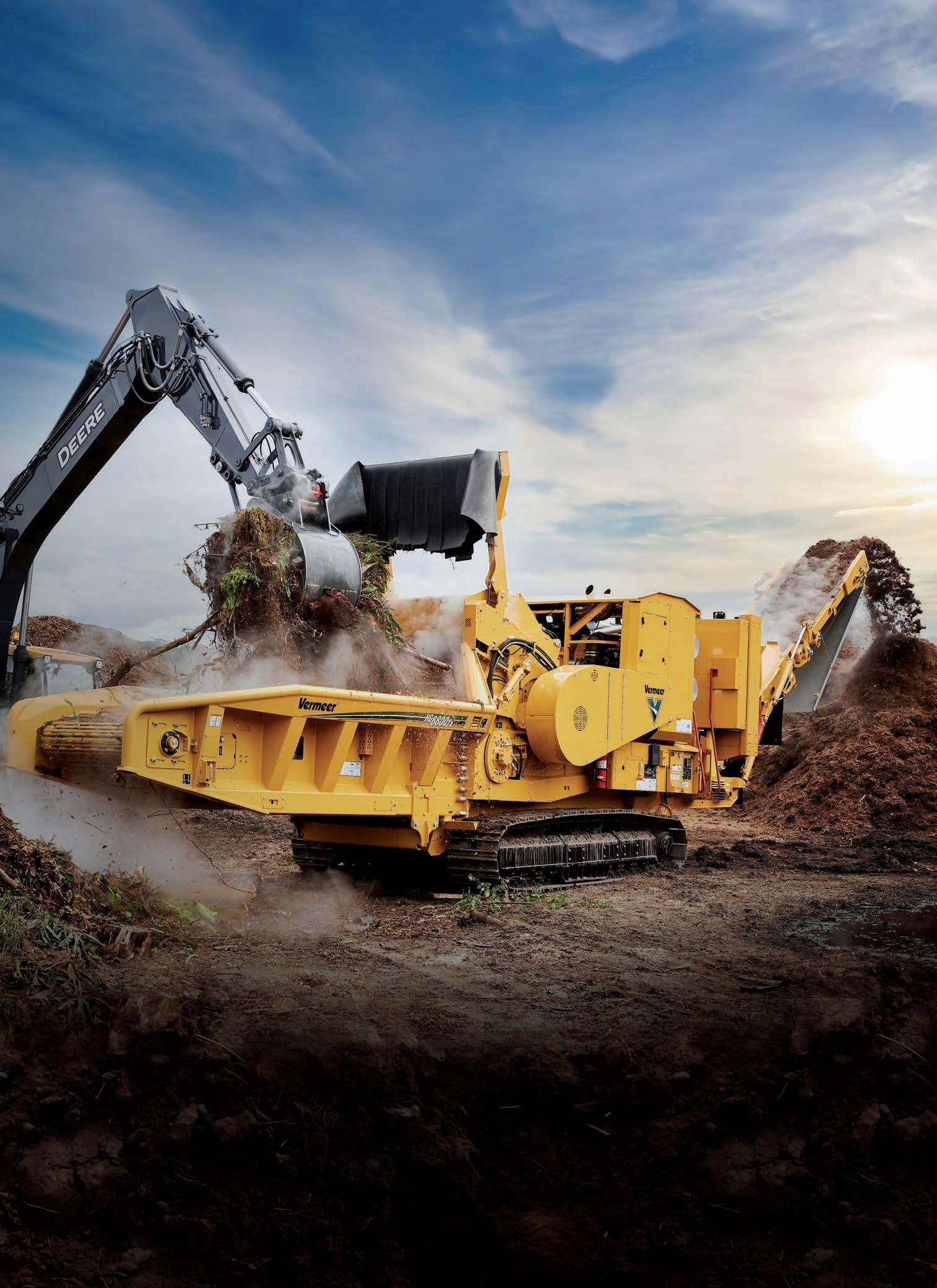
TECHNOLOGY MITIGATING MAJOR MACHINE DAMAGE.
Vermeer’s Damage Defense™ system is a Vermeer-exclusive product and an optional add-on, offering additional protection for grinders by using exclusive technology to sense metal vibration in the infeed and the mill – reducing the likelihood of damage caused by metal contaminants. Fully compatible with the HG6800TX, the Damage Defense™ system is perfect for any Vermeer tub or horizontal grinder operation that may encounter metal contaminants mixed in with its incoming materials. Contact your local Vermeer Australia team to speak to our recycling specialists.

VERMEERAUSTRALIA.COM.AU | 1300 VERMEER


Vermeer and the Vermeer logo are trademarks of Vermeer Manufacturing Company in the United States and /or other countries. Product speci cations are subject to change by OEM. © 2024 RDO Equipment Pty Ltd (trading as Vermeer Australia). All Rights Reserved.
(Continued from the Cover)
The figures
What are the hard facts when it comes to how the organisation has performed during the financial year of 2022/23? It responded to more than 29,000 pollution reports, which was almost a 50 per cent increase on 2021/22; responded to 100 per cent of primary waste incidents within 24 hours; attended 47 fire and other emergencies; had a 34 per cent increase in the number of inspections; carried out 217 audits and 5412 inspections of businesses and premises including 516 preventative inspections at high-risk sites; and issued 3316 licences, permits and registrations assessing 89 per cent of applications in statutory timelines.
When it came to penalties and other remedial outcomes, there was another increase in activity over the previous 12 months.
“We issued 2,695 warnings, 6,080 remedial notices, and 9,207 infringement notices, about a 34 per cent increase on the previous financial year,” said Miezis. “At the pointy end, we completed 98 prosecutions for offences under the Environmental Protection Act with a 97 per cent criminal prosecution success rate, which tells me we aren’t being frivolous in using our enforcement powers.
“We also commenced our first civil proceedings and criminal prosecutions for non-compliance with the general environmental duty, which, of course, is the centrepiece of harm prevention in the Environmental Protection Act of 2017.”
Miezis was quick to point out that he doesn’t believe that EPA Victoria is being over-zealous, just more proactive. It hasn’t just been more diligent in holding those who break the laws with regard to the 2017 Act accountable but has also been engaging with the community regularly. It means that people are aware of what their responsibilities are when it comes to complying with regulations.
“We prioritised effective engagement with communities, with

governments, with businesses and with industries in the spirit of shared responsibility for protecting our communities and our environment from the harmful effects of pollution and waste,” he said.
He said the organisation had completed 1,678 science advice requests, published 18 peer-reviewed scientific articles globally, held 2,013 stakeholder engagement sessions, as well as actioning more than 56,000 emails, and 46,000 phone calls about pollution and waste issues.
“We’ve also established five consultation groups with industry sectors, including the waste and recycling sector,” said Miezis. “We’ve done this so there is twoway information sharing about our strategic and state-wide issues and opportunities relating to Victoria’s environmental protection framework.”
When it came to the scientific aspect, Miezis wanted to point to the strength of the science that
underpins the EPA’s regulatory decision-making. He said that EPA science was cited 1,336 times from 2020 to 2023, compared to a baseline of 850 and a 2027 target of 1,275.
“Our scientists published articles in world-class journals and presented at conferences,” he said. “This means that we’re having an impact not just in Victoria but in Australia and worldwide.”
Miezis also stated that one of the key objectives for 2023 was to ensure those with a registration, license, or permit issued by the EPA understood their responsibilities when it came to protecting the environment. He said that 76 per cent of such organisations and businesses stated they had an ‘excellent understanding’ of their role.
Miezis said there was room for improvement in his organisation.
Although EPA Victoria found that 83 per cent of its regulatory decisions met quality standards, they aimed for 95 per cent. He stated that
Moving forward, Miezis said the organisation plans to meet certain targets by 2027. He said some of those targets were ambitious but were achievable, nonetheless. For example?
“We set a target of zero days for the number of exceedances of maximum concentration standards for nitrogen dioxide, ozone, PM 10, and PM 2.5,” he said. “The results for 2023 were 16 days. Exceedances were mostly PM 2.5 from large industrial sites.
“We’ve got more work to do with the (waste industry) and others in transitioning to cleaner infrastructure at these often, longestablished businesses.”
One of the KPIs it will have to work on if it is to reach its 2027 target is one of community trust. It has held steady over the past few years, hovering around the 50 per cent mark. Miezis said the target is
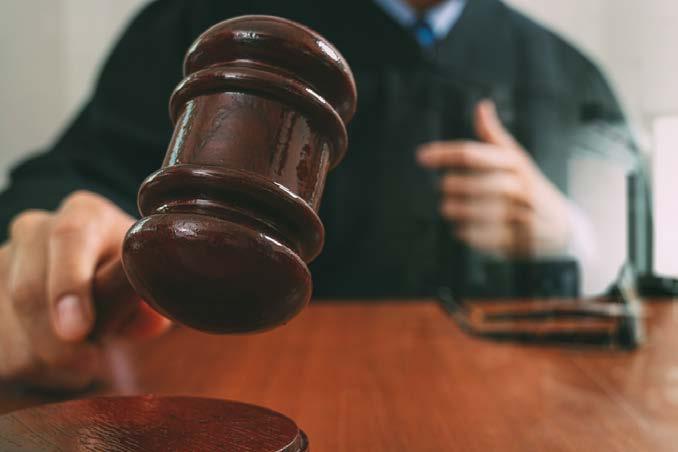
95 per cent by 2027.
“Much of our focus has been on industry and business,” he said. “As we build…more campaigns that are focused on engaging the broader community, we expect that this will build awareness of our work and support the strengthening of trust in the organisation.”
Over the next 12 months, Miezis said the organisation would concentrate a lot on compliance or lack thereof.

He said the EPA was moving from building awareness to expecting action. This includes wanting to reduce non-compliance in priority industry sectors by 20 per cent over the next 12 months. This also meant targeting priority risks of harm to make the biggest difference to the community.
“(We’ll) be drawing on our intelligence capability, science, community input, and industry,” he said. “We’ve identified priority harms. We’re paying more attention

to climate change and greenhouse gas emissions, both as a regulator and an enterprise. We will publish a statement of regulatory intent to signal how EPA Victoria intends to regulate the causes and consequences of climate change. This will be released for industry and public comment in early 2024. It will be finalised in the middle of the year.”
He said his organisation expects businesses, both big and small, to understand their risks and have plans to prevent those risks from eventuating and causing harm to human health and the environment. He said that although the EPA will continue to provide guidance and support to comply, businesses claiming they may not be aware of and/or not understand the laws would be told in no uncertain terms that that type of reasoning would be an unacceptable excuse.
Miezis also touched on a couple of subjects that got a lot of coverage in 2023 – fires, specifically those caused by lithium-ion batteries and odour from landfills.
“The EPA can’t (deal with these issues) alone,” he said. “We need
collective and coordinated focus on these issues across all levels of government, industry, and community.
“Reducing the impact of odour from landfills, resource recovery and other industrial sites on the community is also an important work area. We want to increase the proportion of priority sites with effective measures to address or prevent odour issues by at least 20 per cent.”
Miezis also said his organisation had to make sure it keeping to the rules. He said if you are a regulatory authority, and you’re always looking over the shoulders of others to see if they comply, you better have your own house in order, too.
“Internally, we have several projects planned for this year that continue strengthening the EPA as a fair, transparent and accountable regulator…This includes work on our quality assessment programme, ensuring that we prevent fraud within our organisation and have a robust scheme for complaints against EPA officers,” he said.













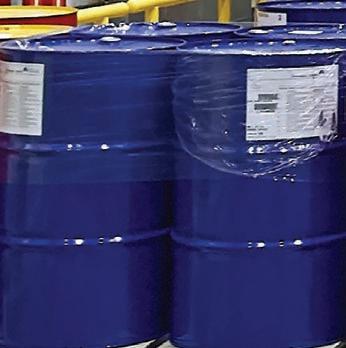



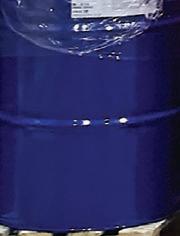

Pure Environmental is a wholly Australian-owned company founded with the mission to transform the circular economy through advanced resource recovery. We believe in pushing boundaries and challenging norms in waste management, providing exceptional, innovative, and sustainable solutions.

Miezis said that EPA Victoria also issues legislative instruments designed to remove barriers or clarify requirements to comply with the law. It’s made determinations to support the use of processed organic waste, livestock, manure, and effluent, fill material and recycled aggregates.
“These determinations are specific to those materials and industries that use them,” he said. “Feedback on them so far has been largely positive. We’ve issued general designations – that have benefited many product stewardship schemes – to collect waste that can be hazardous if not handled correctly. These schemes include Paint Back, used lead acid batteries, and the return of unwanted medicines.”
He said that these designations have helped maintain and support new collection sites, which are often critical to the success of these schemes. This year, the organisation will be releasing legislative instruments for using fly ash from black coal-fired power stations in cement and digestate from anaerobic digestion facilities.
In a recent topical issue in New South Wales with asbestos
contamination found in mulches, Miezis stated that the organisation is aware of the challenges and how unclear the requirements are about treated timber being used in mulches. This has meant a lot of material has gone to landfill.
“The EPA is putting together a project to work with industry, which will clarify the requirements for safe recycling of treated timbers such as mulch,” he said. “Looking at the types of materials covered daily, it’s fair to say it is challenging to put in place industry-specific guidance and legislation that covers every need of this industry.”
He said that where possible, the EPA will continue to discuss and advise on the best way forward to achieve the aims of sustainable resource recovery. However, given the sector’s dynamism, demand for everything from compliance advice to decisions about permissions is high.
“We do ask for some patience, particularly on those complex matters, which can take some time to resolve properly,” he said. “EPA Victoria is committed to advancing this sector, but this can’t be done at any cost. We’ve got to prevent those unacceptable harms to our
environment and human health.
He said under the duties-based system that Victoria utilises; the responsibility doesn’t rest solely on the EPA. It’s a requirement for the industry to do the testing, background, and planning, understand the risks, and then implement appropriate controls and operations.
“The benefit of this isn’t just compliance,” he said. “And it’s not just avoiding enforcement action by the EPA, but it’s about building end-user markets for recovered
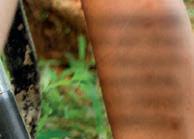
materials, and ultimately, to growing and advancing the waste and resource recovery industry into the future.”
Miezis finished by stating that the EPA and the waste and resource recovery sectors do share a common interest.
“We want to have a thriving and sustainable industry with excellent risk management levels and high levels of environmental performance,” he said. “And put simply, the environment is everyone’s business.”







is just one of many contaminants in landfills that are not under the eye of the various

THE NSW EPA defines contaminated sites as land, “ Where a substance occurs at a concentration above the normal level. Exposure to some substances may affect the health of people, animals or plants and make land unsuitable for use.”
Currently, NSW has more than 400 active and recently closed landfills. Only 106 are listed on the contaminated lands register.
Those listed are generally urban, large landfills both open and closed. The remainder, mostly rural informal landfills and tips, are not registered. Only 20 of the 106 are supervised under the Contaminated Lands Act. Sixty-one are not required to be supervised and 30 are “under assessment or other categories”.
In other words, of the 400 landfills (plus) in NSW only 20 are actively supervised as contaminated sites by the EPA.
Should all landfills be registered as contaminated sites? I think definitely yes. Why?
The key reason is to ensure that, if they need to be, that they are managed as contaminated sites and that the correct environmental protections are put in place to make sure they don’t pollute.
The EPA does licence large landfills (over 100,000 t/yr input) while councils have responsibility for the day-to-day management of smaller landfills. But licencing does not require inclusion on the Contaminated Land register.
To determine whether to declare land as ‘significantly contaminated’ and therefore subject to EPA regulation, the EPA assesses:
• whether the substances have already caused harm or are toxic, persistent or bioaccumulative;
• whether the substances can be transferred to human beings or features of the environment, for
example, through contaminated groundwater or soils;
• the current or future uses of the land and the adjoining land; and
• whether the substances are likely to migrate from the land, or already have migrated, (Contaminated Land Management Act 1997, section 12).
The last time a landfill was added to the Contaminated Land register was 2017.
Putting them on the register guarantees EPA oversight and ongoing monitoring and pollution prevention interventions where necessary.
If you have been to a rural tip, you will know that more often than not, everything is thrown in there. Agricultural chemicals, pesticides, demolition including asbestos, PFAS-contaminated products, waste from industry, waste from business, as well as household waste including chemicals, paint and pesticides. In other words, just about
all the pollutants that our economy generates. It is indiscriminate and largely unknown.
The biggest risk is groundwater contamination via leakage of leachate. Most rural informal landfills are unlined. They can be a simple as cut-and-fill holes in the ground constructed by the local council operator.
Here is a quote from the EPA web site:
Common examples of point sources that could contaminate groundwater are leaking underground storage tanks, inadequately managed waste disposal sites and accidental chemical spills. (Contaminated Sites Guidelines for the Assessment and Management of Groundwater Contamination 2007) ”.
The EPA then goes on to make my case for me:
Groundwater is important for the health, and in some areas the economic wellbeing, of NSW’s community. It is used: as a source
of domestic, recreational, rural and industrial water, and, in some parts of NSW, as drinking water to irrigate gardens, parks, and playing fields in urban environments, especially in recent times by the agricultural and industrial sectors to support food production and other activities to help sustain life in streams and rivers to support fragile ecosystems such as wetlands in dry periods”.
MRA does a lot of work with rural landfills and landfill operators. In our experience most landfill operators welcome EPA involvement because it helps them to justify capital investment and operating expenditure on better landfill management.
Councils are always strapped for cash and so long as the landfill is not causing problems, some other squeaky wheel gets dealt with first and always. Landfill management drops to the bottom of the priority list until it pollutes.
Furthermore, staff often recognise the risk to council of breaching relevant pollution prevention regulations under both the NSW pollution regulations (POEO Act) and the National Environment Protection (Assessment of Site Contamination)
While councils are expected to self-regulate small landfills, it is simply too difficult and requires

Waste Expo Australia provides resource recovery professionals an industry platform dedicated to advancing the best practices in waste management and recycling, while making a positive difference to the environment and community.
expert knowledge. The EPA needs to involve itself in these sites and the first step is to include them on the Contaminated Sites Register. If money






and resources are the issue, there is $860m per year raised by the NSW s.88 landfill levy that could be put to good use.


industry. He said 25 years ago, most people saw the waste industry and the people who worked in it as a group that were there to get rid of rubbish and not much else. In other words, “just get on with it and don’t bother us”.



THE PACE of change of the industry is one thing Greg Freeman has noticed in the 28 years since he started the Coffs Waste Conference. Back in the day, topics of discussion included rubbish bins, trucks, weighing systems and collection services. The past decade has seen a shift to larger, more encompassing issues such as the circular economy, mandated government diversion/recycling targets, landfill levies, product stewardship and organics.
Freeman said the pace of change has been “overwhelming” over the past three decades. He puts it down to an engaged community, which has grown with the
“I go year to year, and I look at the types of abstracts we get into the conference,” he said. “These reflect the type of things that are happening out there. And there’s definitely been an incremental shift with some things, but there’s been a massive shift with others.”
Such as?
“Designing out problematic waste streams at the design stage. That has really only emerged in the past five years or so,” he said. “It is one of those important but difficult things to achieve. It’s like waste avoidance; it’s in that category. It’s the same with the circular economy. Ten years ago, it was hardly talked about at all. It emerged five years ago and now it’s the main game.”
Then there are the work opportunities that now exist that we’re not around 10-15 years ago. Not long ago, waste was the main purview of councils. And while they still have a huge say in how it is collected, there is now a lot of private enterprise within the industry.
“Thirty years ago, waste disposal was conducted by councils and a few big companies – there were only a couple of companies who did most things, but a lot of councils did a lot of things themselves, which they then passed on to companies,” he said. “Now you have more industries involved. As soon as you look at the concept of circular economy, you’ve got people who are investigating things such as recycling coffee cups and changing the whole way we look at something like that.”
He believes a lot of people are showing
interest in having a career in the waste/ resource recovery industry because there are emerging parts of the industry that didn’t exist a few decades ago.
“One of the biggest challenges we face right now is this tension between consumption and minimisation,” Freeman said. “It’s very hard to fight against the packaging industry. The punter wants to put their stuff in the yellow bin, and they want to put their stuff in the green bin. But if they can’t go to the supermarket and buy stuff with minimal packaging, they’re always pushing it uphill. The



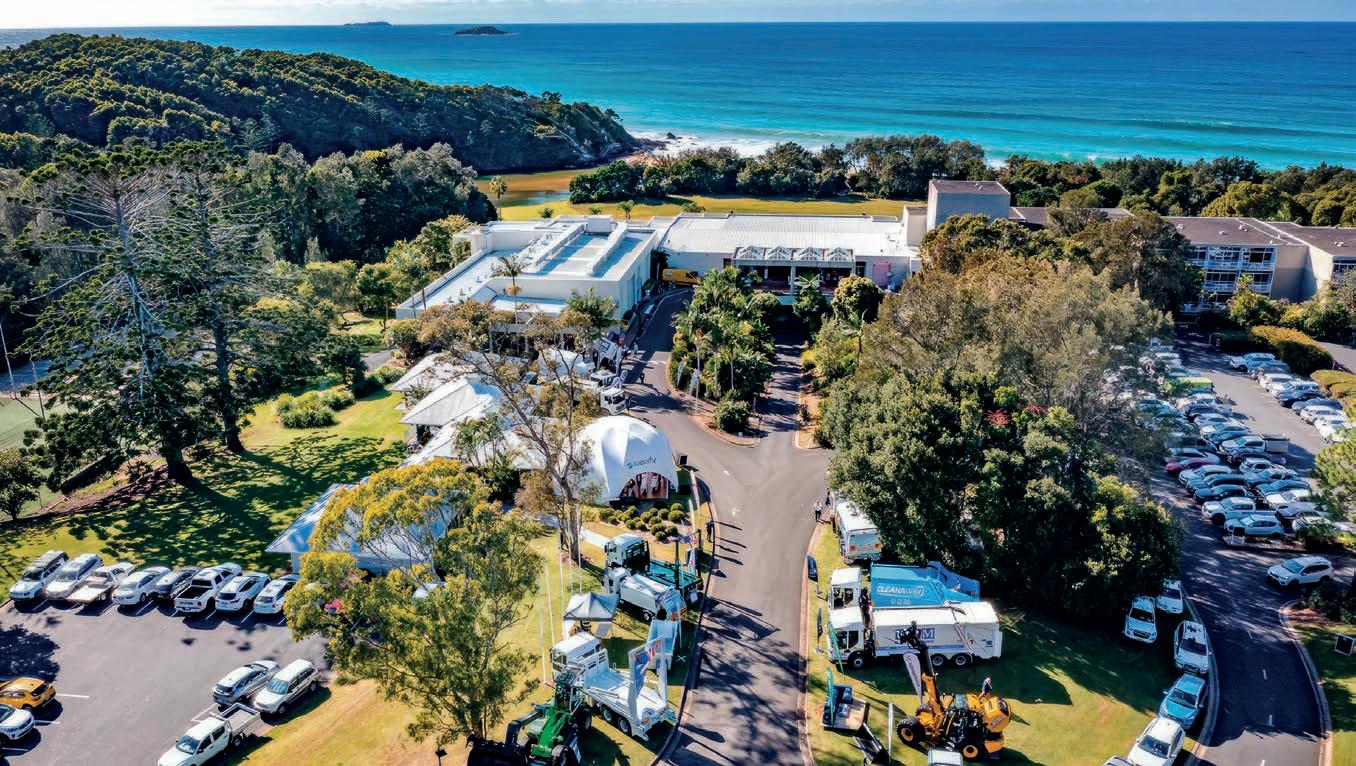

biggest battle is consumption versus avoidance, and it’s connected to lifestyle.
“This is why I find the social science aspects of waste management so interesting, because we all know what the solution is. We all know the community needs to be more engaged. We all know we need to take personal responsibility. We all know that, but because our lives are so busy and embedded with our daily stuff, we still have not adjusted our lifestyle.”
Is education the answer? Partly, said Freeman, but it’s as societal mindset that needs to change and that is no easy task. Why?
“You’re pushing against a society that is distracted by other things,” Freeman said. “They’re distracted by their family life. They’re distracted by their working life. The amount of time people put into change their behaviours is minimal, so their convenience wins out. And that’s the problem.”
Similar to product stewardship – those who think it should be mandatory vs those who think it should be voluntary – Freeman believes when it comes to changing behaviours you need both a bit of carrot and some stick. He said there is also a need to up the ante in terms of the amount of infrastructure that is available.
incentivise households to minimise waste,” he said. “Packaging comes into that, and we also need to try and understand people better in their day-to-day lives. It’s an ongoing process it.”
He said the stick aspect comes in the form of penalties.
“That’s an ongoing process,” he said. “You don’t want to go too hard with households because you don’t want to scare them off. But you still want to provide disincentives, and pricing and economics are the best ways for councils to do that. It’s important that councils understand economics and apply it to households to put that subtle pressure on them.”
And infrastructure? He harks back to the 1970s when Freeman worked at Canterbury Council in Sydney, and the Metropolitan Waste Disposal Authority ran Sydney’s landfills. He believes that provided a lot of opportunities for privately owned companies to step in and take charge. Was that a good thing?
the 30-plus councils in the city really haven’t got personalised infrastructure. They’re at the mercy of the market. And in some ways that has been very difficult to achieve good infrastructure.”
“The carrot is certainly to try and A
“The Metropolitan Waste Disposal Authority took over running a lot of council landfills,” he said. “Then they progressively closed them down due to environmental concerns, but they never really had a plan B. Private enterprise largely run the show, which has put Sydney in a position where
Which is why education and infrastructure continue to be two of the big topics on the agenda at the Coffs Harbour Waste Conference. Technology is also going to be a highlight this year.
“This topic has been an emerging one in the past three years,” Freeman said. “We have a heap of stuff on infrastructure with a lot of abstracts on that combined with technology.
“We’re getting a lot more interest from other states on FOGO and organics. It used to be only New South Wales that did FOGO, now it’s starting to spread and we’re getting more universities involved.”
He said the circular economy will also be a dominant theme because it covers off on so many different aspects of the industry, as well as extended producer responsibility.
As for the event itself, at the time of writing, it’s almost sold out in terms of exhibitors and sponsors. It is anticipated the conference will attract more than 650 delegates and approximately 150 speakers.





illegally dump and stockpile their waste.”
And because there is strong legislation, it means the ATRA, and its members, can concentrate on more pressing issues. Such as? According Kelman, off-the-road (OTR) tyres and finding domestic end markets for products.
‘We only have around 12 per cent of OTR’s removed from mine sites for recycling, so the sector can certainly do more from an environmental point of view for those tyres,” he said.
“Those mine sites should be rehabilitated back to something approximating what they were before the mines were commissioned. If you’ve got huge piles of tyres on the country, that isn’t rehabilitation. Like the minerals extracted from the mine pit, those endof-life tyres are a resource too, and they should be treated as such”.
And he’s not buying the reasoning that these tyres – and most of them are massive tyres that go on huge trucks that service the industry – are too expensive to move. As Tyrecycle CEO Jim Fairweather recently pointed out when interviewed for Inside Waste, his company is investing in a Port Hedland OTR tyre specific plant to recycle these mammoth pieces of rubber. There is no reason why the mode of transport used to get new tyres to a mine site can’t be utilised to bring back used ones on the return trip so they can be recycled. Kelman agrees.
 By Inside Waste
By Inside Waste
ROBERT Kelman wears a few hats in the waste and resource recovery space, and one of them is the executive officer of the Australian Tyre Recyclers’ Association (ATRA).
According to its website, the association was “established to represent the interests of the legitimate and sustainable used tyre collection and recycling sector in Australia”.
ATRA members recycle over half a million tyres per week and the association sees plenty of opportunities ahead. Kelman is not a person to mince his words – he knows where the bottlenecks are, who is responsible and
has some ideas on how to fix them.
Data currently available shows that the industry is collecting between 97 and 98 per cent of all commercial and passenger tyres, with the main driver for those collections being legislation.
“It’s a pretty good success story,” he said. “It’s driven by state regulations, which continue to be the main driver for the whole sector. Because if it weren’t for state regulations, we would have a whole lot more landfilling, dumping and stockpiling.”
He said one of the principal ideals for the industry over the past eight years has been to limit stockpiling. He said without legislation, the most popular solution would be to collect a fee from retailers
and then stockpile “if you could get away with it, you’d be making heaps of dough right, because recycling costs money.”
Kelman said it was incumbent on the ATRA and its members to work closely with the various Environmental Protection Authorities (EPAs) across the country to help them identify problems, find illegal and rogue operators, return data, and address any other issue that affects the industry.
“We make those rogue sites and operators known to regulators, and we push hard for enforcement,” he said. “None of our industry and no ATRA members benefit from a small group of unscrupulous retailers (waste generators) directly dumping or contracting others to
“If there’s trucks leaving mines empty because they’ve dropped off a couple or more huge mining tyres, they can transport used ones back,” he said. “It should be economical as a disposal fee underpins most recycling.”
‘Discussions with regulators and the mining industry are continuing and it’s an issue we look forward to continuing to work together to resolve, said Kelman
Kelman sees exports as a leading light where end-of-life tyres currently find their mark. However, everybody would need to be on board to push for it. When it comes to markets for recycled products, tyre-derived fuel (TDF) is growing in popularity, especially in Japan and South Korea, where a lot of it is exported from Australia.
“Unfortunately, some commentators have been disparaging exports, to which I say, ‘Okay, well, give me an off-take agreement in Australia, and then we’ll
supply it to Australia. But to date nobody is buying, so why criticise exports? The Australian economy is built on exports, why is that derided for the recycling industry? It makes no sense, and frankly if we didn’t have export markets there’d be a whole lot of problems with end of life tyres in Australia.’
“The Japanese love TDF for coprocessing in their cement kilns, and it reduces their emissions by 30 to 40 per cent. It’d be great if Australian entities were smart enough to do that, but we’re not yet.”
“Japan has become a huge buyer of TDF in the last six to 12 months. They’ve got net zero emissions targets, and they’re hungry for alternative fuels. That’s especially the case for those big industrial energy consumers like cement kilns.”
Kelman was recently in New Zealand, visiting the country’s single-cement kiln in Northland. He said they aim to use 30,000 to 40,000 tonnes of tyres a year if they can get that much volume for coprocessing in their cement kiln.
“That’s a great story,” he said. “We would love to see something like that here, but we don’t have any offtake agreements at all for TDF in Australia. That’s a shame.
“It’s a good news story for those guys because they’re saving 30 to 40 per cent of greenhouse gases compared to using coal.”
One thing on the association’s wish list is a ban on landfilling of all tyres including OTR tyres.
“The biggest gap by far between the 97 per cent collection rate for used tyres and the ‘recovery’ rate is legal landfilling. We believe this expensive disposal option will slow but really there’s no need for landfilling processed tyres as offshore markets are strong,” said Kelman.
Kelman believes that, overall, there is enough legislation to deal with what should be done with end-of-life tyres. Enforcement is the issue.
“The law is absolutely clear,” he said. “If you’re collecting tyres, you’ve got to have a licence. And that’s written in the law. And if you have a licence now, that licence will stipulate holding only a certain small quantity of tyres. That’s 100 per cent clear in every state right now. Are those laws being enforced to their maximum? Completely different conversation.”
As well as holding the states accountable, Kelman believes Tyre Stewardship Australia (TSA) could also assist and be proactive in locating those waste generators (retailers) who step outside the bounds of current legislation and regulation.
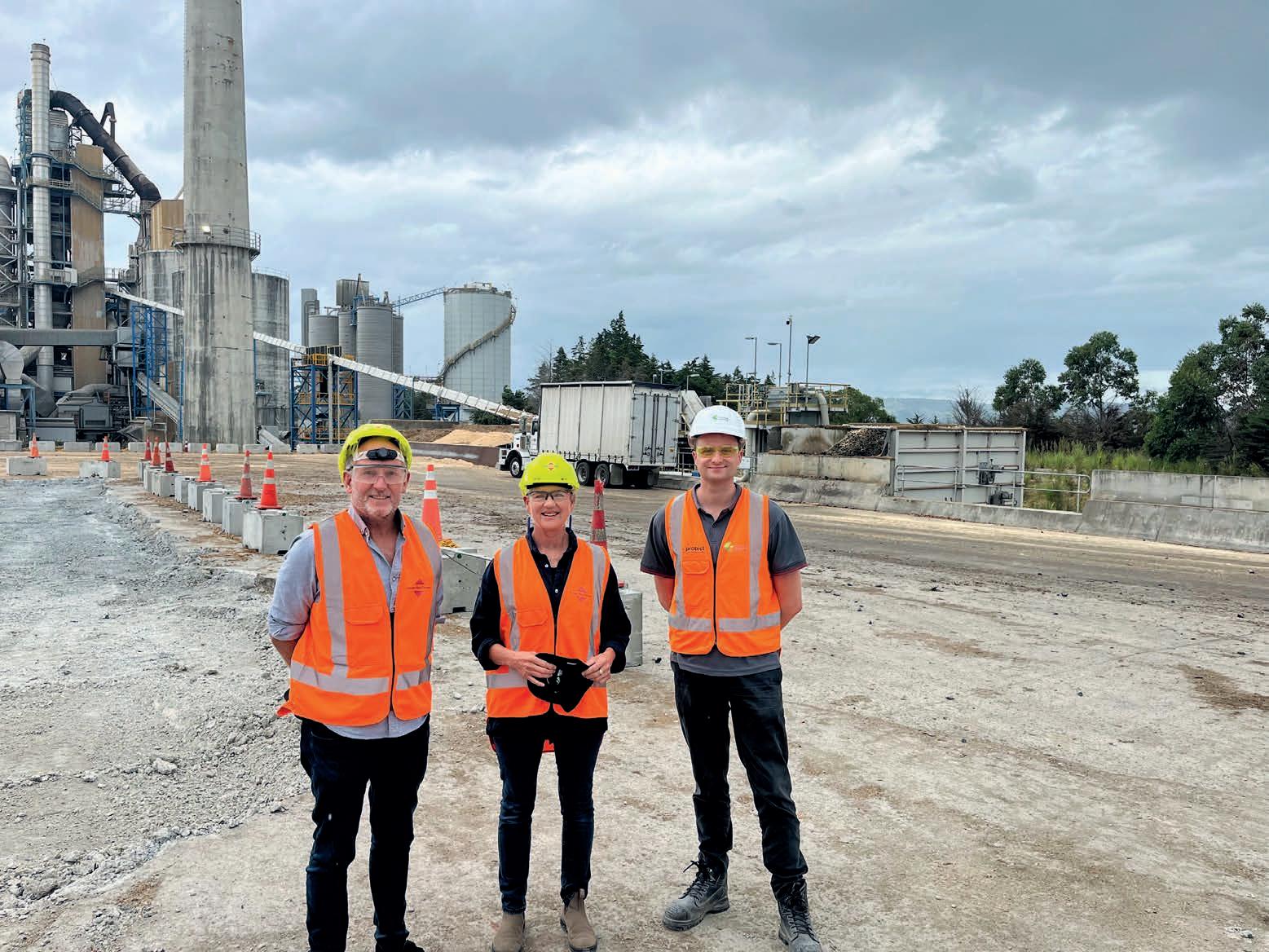
He points out that a lot of his time is spent with ATRA members helping EPAs enforce state regulations so they can go after those not complying. He believes that some of the TSA’s almost $8 million annual budget could be spent on helping the various EPAs track down those who flout the system.
“There’s a real opportunity for TSA’s resources to be prioritised towards helping EPA’s,” he said. “TSA could for instance fund putting cameras on particular sites to go and find the rego numbers of offenders. That would represent them playing a really constructive role in any enforcement.
“TSA are close to the waste generators, the tyre retailers. That’s why working together on enforcing the existing rules makes so much sense. The tyre recycling industry needs to see this type of pragmatism, it’ll provide more certainty to recyclers, which, in turn, will foster even more investment from the industry into the future.”

WESTREX has upgraded its facility in the Brisbane suburb of Wacol to increase the site’s capabilities to receive, process and treat liquid and solid waste.
The upgrades began five years ago when WestRex took ownership of the site. The improvements were implemented so the company could process more materials, such as packaged waste and hazardous chemicals. Prior to this, it was primarily setup for waste oil recycling.
Operations Manager Chris Mann said that the WestRex focus on customer service meant that they would need to diversify the capabilities of the site to ensure they could provide a complete waste management offering.
The upgrades would increase the diversity and throughput of solid and liquid hazardous waste in treatment systems. To ensure that best practice waste management could be achieved, a few upgrades were required, with the site now operating at a recycling rate of 93 per cent.
“In order to grow the business, we had to remove some of the older equipment and build new infrastructure to be able to do the work,” Mann said.
The Wacol facility’s water treatment process receives water contaminated with oil. The water is usually from industrial sites, people cleaning out their own oil tanks such as petrol stations, or oil spills that have mixed with water and need to be separated. The facility had a 170,000-litre pit to process liquid waste. WestRex installed three pits with a combined
capacity of 250,000 litres. There are two additional pits to process solids.
Another upgrade to the water treatment process was removing the RM-10 water treatment system and introducing the Dissolved Air Flotation treatment system (DAF). A DAF system clarifies wastewater by removing contaminants by dissolving the wastewater under pressure and then releasing the air at atmospheric pressure in a flotation tank. With the increased capacity, and the DAF system’s implementation, Mann said the scale to which they treat water has more than doubled.
Mann said the pits, systems and pump upgrades had reduced customer wait times.
Mann compared it to when seven or eight tricks were queued up for hours





waiting to unload. They now wait for “half an hour on a bad day”.
“We can literally unload four or five trucks at once. We don’t see those big traffic queues anymore,” he said. “The workers unloading the trucks are in the field of logistics, so they must be constantly on the move instead of sitting in a queue for hours.
“They need to be unloaded back out to the next job. Hopefully, the improvements we made mean they can be more productive.”
The upgrades to the facility have also meant it can now deal with flammable liquids.
Mann said this ability has helped set the site apart from other facilities. WestRex has implemented a new bulk flammable liquid pump that increases the speed of the process “like no other”.
”We are one of the only sites that can quickly unload flammable liquids and deal with them,” he said. “That’s something that sets us a little bit apart. Our main competitors
don’t really target that waste quite so much.”
While most of the work has been completed, some peripheral improvements are still pending to make certain processes easier.
Mann described the upgrades as an organic build that improved systems and facilities as the business has grown in scale and effectiveness over the past couple of years.
“We’ve improved it as we’ve gone along,” he said. “We decided to start with oil, and it was great. However, we needed to provide another service requiring a process called chemical stabilisation, so we built a facility for that.
“However, it was only of a small capacity. As our market has grown we have made the decision to upscale to increase the capacity, so we have responded to this and commissioned equipment with a larger capacity.”
Once the hazardous waste is removed
from the liquids, the recycling process is carefully crafted for each substance. Mann said what happens to the waste, oil, and water once these systems have finalised their treatment is equally as important as the process itself.
As mentioned, once the contaminants are removed, the water is sent back to an oxygen treatment facility to get repossessed as wastewater. The water is then treated, tested, and transported back into the sewer.
Mann said that in terms of other hazardous materials, WestRex’s purpose is to reduce waste that goes to landfills.
However, unfortunately, it’s still currently impossible to stop all waste from ending up there. Therefore, small amounts of contaminants or solids that come from the liquids end up in landfills.
“Water goes back to the oxygen treatment facility and gets reprocessed as any other wastewater,” said Mann.
“We treat and remove the contaminants and we have strict guidelines as to what we’re allowed to release.
The contaminants, if it’s oil, get reprocessed and recycled. Other contaminants – usually small amounts – end up in landfills because there’s not much else we can do with it.”
WestRex has been involved in waste management of liquid and solid hazardous material and organics recycling since its conception in 2012. It recovers and delivers solutions to waste and contaminated site problems.
As well as recycling wastewater, oils and hazardous products, it also has an organics recycling facility in Leyburn.
Mann said ongoing improvements and proactive maintenance of WestRex facilities, as well as maintaining a strong customer focus, remain a priority.





 By Inside Waste
By Inside Waste
OVER the past couple of years BINGO Industries has stepped up its footprint in the waste/resource recovery sector. BINGO was acquired by Macquarie Asset Management (MAM) in 2021. Over this time the company has aggressively invested in recycling infrastructure including its new MPC2 processing facility at Eastern Creek, and a new closed loop wet and dry processing facility at Patons Lane, both of which are in Western Sydney.
These developments indicate that the company is ready to roll up its sleeves and get stuck in to doing its part in making sure Australia heads towards a circular economy.
The Patons Lane Resource Recovery Centre (RRC) is designed to accept contaminated soils, such as General Solid Waste Soil (GSW), which is processed in the wash plant to produce a range of cleaned, washed sands and aggregates, for reuse in civil and construction projects, as well as heavy industries. In other words, a circular solution. It is hoped that it will produce up to 200,000 tonnes of washed recycled products that will then enter the Western Sydney marketplace. Patons Lane
RRC consists of the hybrid dry and wet processing plant itself, and the Recycled Water Treatment Plant (RWTP), which is still under construction but will be commissioned late April 2024.
BINGO Industries’ general manager of strategy and innovation, and 2021 Young Professional of the Year at the Waste Innovation and Recycling Awards, Tara Osborne, says the vision for Patons Lane is to complement the company’s footprint at Eastern Creek.
“We’ll be targeting GSW recyclable and GSW landfill material for washing, processing, and production into recycled products,” she said. “The key product streams will be cleaned, washed aggregates and sands, as well as engineered fill. We’ll have a greater sense when we start operating the plant, but we will be aiming for a pretty ambitious target – greater than 95 per cent diversion of waste from landfill.”
BINGO is also looking at making sure that it gets the right waste streams to put through the new processing plant.
“We’ll have to be quite focused on what materials we accept through the gate because of the nature of the wet washing process,” Osborne said.
“Ideally, it’s a product that’s not too high in clay content so we will need to make sure that we’re targeting specific volumes through this plant that we can recover.
“This is the first facility of its type in Sydney. With recent issues like the asbestos mulch found in Parklands in Rozelle – and the implications for our industry – I think this highlights how important this type of facility is. We’re going a step further down the chain and ensuring that we’re achieving the best quality recycled products through washing of material.”
Osborne said BINGO is not targeting the traditional use for recycled products. It’s trying to think outside the box, such as working with universities, industry and innovation partners to look at the best use of this material.
“This is tailored for suppliers more than anything,” she said. “It really focuses on the circular economy and moving up the vertical to the highest and best use for recycled content and how we can play a role in reducing our customers Scope Three emissions.
“Things like washed sand into asphalt could be significant opportunity to reduce our
environmental impact from quarrying virgin materials and transporting them hundreds of kilometres to site. Off the back of the mandatory changes in sustainability disclosures, corporate Australia will have to report their Scope Three emissions. These types of products will help them reduce those emissions and create a higher use for products.”
Jason Goodman is BINGO’s head of construction and engineering. He has been at the company for more than five years and sees this facility as not only a gamechanger, but a necessity if Australia is serious about reaching its circular economy goals.
The wash plant receives the contaminated soil, and the washing process begins in the log-washer. The log-washer separates sands, silts and clays from the aggregate by injecting clean water at high pressure, and by agitating the soil and water mixture enabling scrubbing between aggregates for cleaning and separation. This process is called attrition.
Once the aggregate has been washed in the log-washer, there are screens to separate it by size. There



are four aggregate fractions that are then put through a quality control check using infrared optical sorters. The sand and clay particles are collected as a slurry and pumped to the sand plant for further separation and recovery.
“Once it’s there, you end up with a slurry of sand, clay and water,” said Goodman. “That process then recovers a coarse sand and a fine
sand. Then there’s a slurry with a fine silt and clay that makes its way into the RWTP.”
Once the recovered materials have been maximised, what’s left is a watery sludge. A thickener takes the heavy sludge out to the bottom. The water goes across a set of weirs and is then put through the remaining part of the process for treatment. There, a Dissolved Air Flotation (DAF) tank
helps remove more solids.
“And then you’ve got a series of filter banks at the end of the process, which are Multimedia (MMF) and Granulated Activated Carbon (GAC) filters, and they’re removing further solids and contamination,” said Goodman. “By the time it reaches the huge water holding tanks, the water is suitable for reuse.
“The water treatment plan is capable of treating 500m3 of wastewater an hour,” he said. “We’re self-reliant on capturing our surface water and using that to clean, recirculate and reuse.
“We’ve got a high spec on our water quality because it’s being recirculated. If the quality of that water isn’t right by the end of the process, then impurities are going to accumulate.
“That quality control does a couple of things – it allows water to be reused; it maximises the quality of the products because you’re washing with clean water; and then obviously there’s human health considerations in terms of making sure that we’re referring to the relevant ANZECC Guidelines.”
“After the optical separators, the aggregates go outside the building where eddy current separators and magnets do their bit,” said Goodman. “And then the aggregates go into their product stockpiles ready to be put back in the market.
“And once we get the water treatment plant up and running, there’ll be a full reconditioning process where we really tune this all in to make sure we’re maximising the recovery.”
BINGO has invested $14 million in the Water Treatment Plant alone, with the adjacent Resource Recovery Centre (RRC) costing $20 million.
the infrastructure being built around it.”
Osborne points out that one of the main reasons the company is taking such a deep dive into the circular economy is due to the lack of landfills available in Sydney – and she should know as BINGO has two of the biggest landfills left in Greater Sydney– one at Eastern Creek and the other at Patons Lane.
“The Eastern Creek landfill will be full in the next 10 years and we’re staring down the barrel of a critical landfill shortage in New South Wales,” she said. “Patons Lane landfill was approved with a maximum life of 25 years, and we’ve got another 20 years left. Our processing and wastewater plant is helping to improve this infrastructure gap through diversion of waste away from landfill.”
There will be about 12 full-time jobs available at the Patons Lane site, and safety is of utmost importance. Something that is not lost on Osborne.
“We’ve learned a lot of lessons going through the building, commissioning and running of the MPC2 facility,” she said. “We’ve conducted a gap analysis of the Patons Lane site versus Eastern Creek and specifically MPC2. We’re trying to pull over the same safety processes and system regulations to ensure that we’re elevating this site to the same level at MPC2.”
She said that the focus on safety since Macquarie ownership has helped elevate and embed policies that require zero harm across all the company’s sites. Vigilance from all aspects of the business is focused on making sure those standards are met, but she says it is also a work in progress.
What about the end result? Are there markets available for the final processed product?
According to Osborne, the market has changed quite a bit since BINGO put the business case up to where we are today. She said it has softened in terms of what’s out there for GSW soils off the back of a slowing construction industry.
“There are always areas you can improve on but MPC2 was really a step above every other site in our network,” said Osborne. “It’s about leveraging that into Patons Lane.”



“There’s lots of exemptions in this part of the market, which means that you get leakage and often people blur the lines between GSW recoverable versus GSW landfill, she said. “But we’re building this for the future. We’re not building it for the next 12 months. We’re confident that this will be a significant asset supporting the development in Western Sydney particularly with the new airport and
Overall, the Patons Lane RRC will tick a lot of boxes for BINGO. It will help the company meet not only state and national recycling targets, but also its own KPIs. This includes reducing the need for virgin materials, high rates of diversion of waste from landfill, a reduction in Scope Three emissions, carbon emission benefits and the ability to close the loop from site-to-site.
“At the end of the day, what you will see here is a significant step change in the quality of recycled products because you’re producing washed products, as opposed to a dry processed product,” said Osborne.
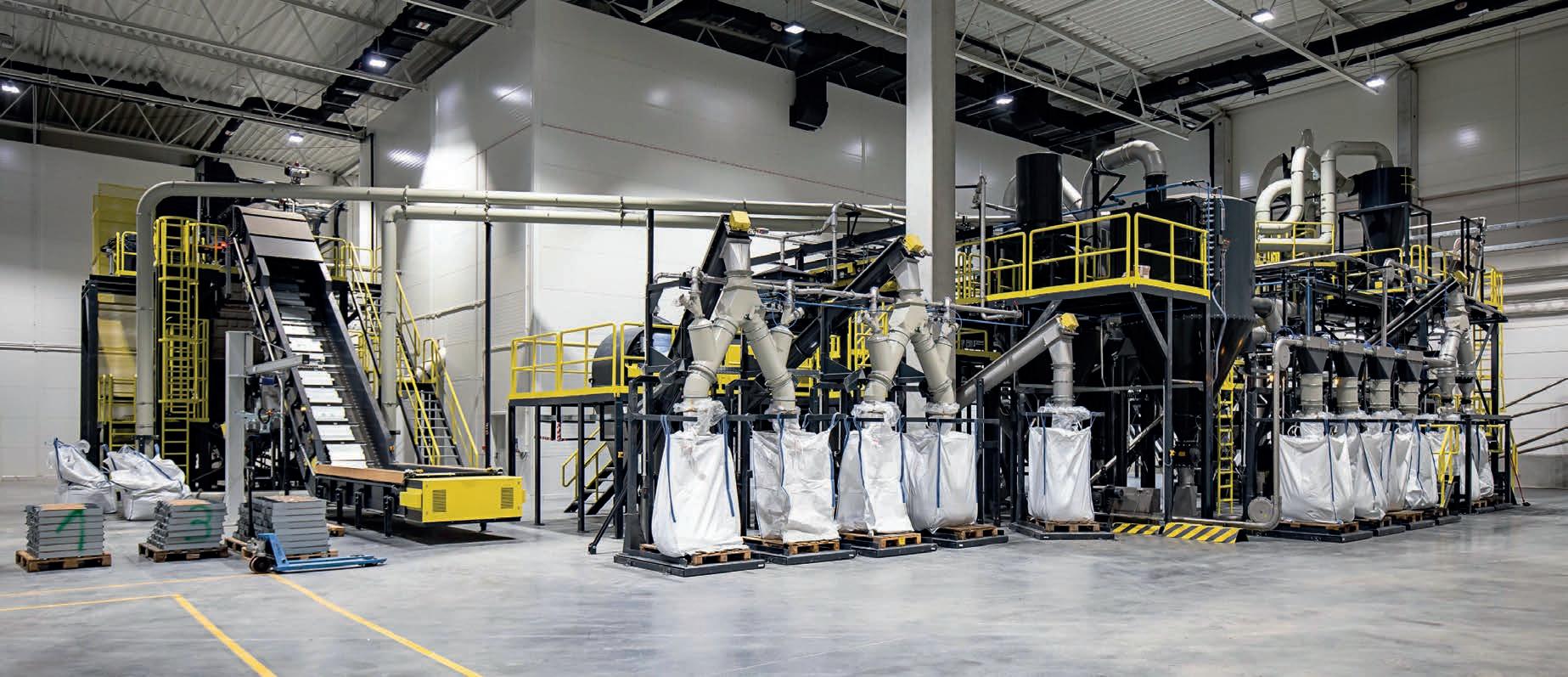
FINDING a solution to Australia’s end-oflife batteries – especially the lithium-ion variety – is a continuing headache for the resource recovery industry.
Battery recycling specialist, Eco Batt, has decided to take up the challenge and is investing about $30 million to build a lithium (Li-ion) battery recycling plant, creating a processing precinct for batteries at the Ecocycle Group’s head office in Campbellfield, Victoria.
Using cutting-edge technology, proven to process more than 25,000 tonnes of batteries per year, the plant will provide a sustainable solution to Australia’s anticipated lithium battery waste streams for the next decade, according to group managing director Doug Rowe.
The ambitious development will provide a state-of-the-art solution to Australia, New Zealand and the neighbouring Pacific Islands battery waste streams and recover up to 98 per cent of the active materials from lithium batteries.
To ensure a world-class solution with the highest level of environmental compliance, Eco Batt is appointing German company URT Umwelt-und Recyclingtechnik to build the facility.
The company has built and commissioned many large lithium battery recycling plants around the world.
“One of the key factors in battery recycling is safety, both for the workers and the environment,” Rowe said. “URT’s plant technology incorporates advanced safety measures while implementing standards not previously seen or used in Australia.”
The plant is designed to prevent the release of solvents by distilling them and capturing the spent electrolyte for recycling.
The off gases and exhaust air is collected throughout the process and treated via a number of scrubbers, carbon absorption and finally a large, high-temperature treatment point for ensuring all toxic and volatile organic compounds and fluorides are handled to the highest environmental regulations.
“Australia as yet doesn’t understand or appreciate the significance of protecting staff and the environment from the off gases being released from processing lithium batteries,” Rowe said.
URT Recyclingtechnik has established itself as a specialist in lithium battery recycling, with many completed plants and projects in progress on four different continents.
This includes recent projects for Polish recycler Elemental Strategic Metals and Asend Element in America.
The company’s turnkey recycling plants are tailored to the specific requirements of customers.
Having a greenfield site gives Eco Batt the luxury of tailoring the plant to be as efficient and streamlined as possible. The specification of the proposed Victorian plant was chosen after Rowe visited more than 40 battery recycling facilities internationally in recent years.
Rowe said that with URT’s expertise, comprehensive services, and commitment to environmental responsibility, URT and Eco Batt are committed to work together to build a showcase plant for Australia that keeps lithium batteries out of the wrong waste streams and into a plant that has been purpose-built to handle them.
This facility will produce green metals for reuse in industry. The recovered black mass will be refined to recover the lithium, graphite, cobalt, and nickel, while the steel, stainless-steel, copper, aluminium and circuit boards will be individually separated as part of the recycling process.
“We have the ability to batch process the varying chemistries we are seeing
in lithium batteries, allowing us to keep that black mass separated and sending the various grades to those offering the best treatment outcomes,” said Rowe.
Eco Batt has a national collection network with more than 7000 companyowned collection cabinets at retail, supermarket, and hardware stores. Specialised, lockable, galvanised, dangerous goods (DG)-approved bulk battery collection bins are provided to industry and located at many local government transfer stations, materials recycling facilities and landfills to underpin the success of the new recycling plant.
The feedstock will be collected nationally with operations already established in every state using specially equipped DG-approved battery transport vehicles.
“Lithium batteries are now ubiquitous in every sector of the economy, society and everyday life and pose elevated risks at end-of-life to the environment while containing critical resources needed for a circular economy,” Rowe said. “They need to be responsibly recycled.
“In the midst of rising demand for electric vehicles and renewable power, and an explosion in battery development, batteries will play a key role in the transition to achieve
preserve critical resources for future generations.
“We have a responsibility to the environment and to respond to climate change with best efforts for the conservation of resources. This plant will do just that,” he said.
The market for energy storage, e-mobility, and lithium batteries across such a vast range is rising in Australia and globally overall.
The Department of Treasury and Finance Victoria reported 8.4 per cent of all new vehicles sold in October 2023 were electric vehicles – more than double compared to sales a year earlier and is representative of the national trend.
Rowe says increased adoption of domestic and commercial energy storage systems, micro mobility, batteryoperated equipment, and all other e-waste streams add to the demand for lithium battery waste recycling.
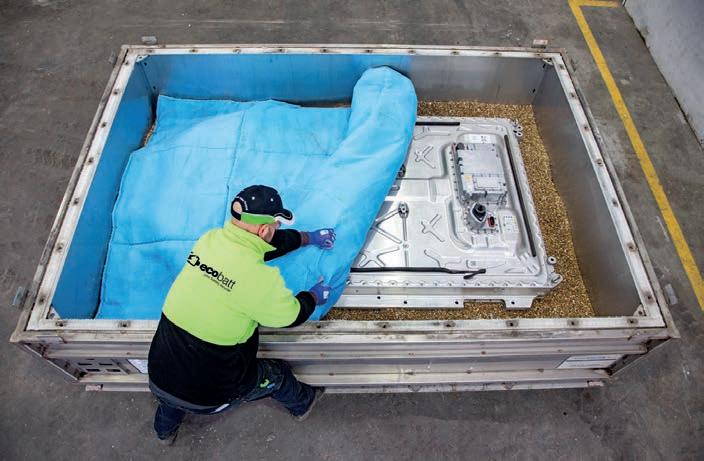



Australia’s climate change targets and so will leadership in advanced recycling technology.
“The establishment of Australia’s largest lithium battery processing and recycling plant marks a step towards a greener future. By effectively managing end-of-life batteries, recycling them responsibly and recovering critical resources, Eco Batt is contributing to the transition to a sustainable and circular economy.”
Rowe said Australia has a unique opportunity to contribute to global goals and to increase the use of recycled materials in new battery manufacturing. By investing in sustainable recycling solutions, Australia can not only minimise environmental degradation caused by lithium batteries but also
The Commonwealth Scientific and Industrial Research Organisation (CSIRO) projects lithium-ion battery waste is growing by 20 per cent per year and could exceed 100,000 tonnes by 2036. If the projection is correct, Australia’s big battery energy storage capacity will have increased 20-fold since 2021 by 2030.
Australian homes with battery storage devices exceed 100,000 dwellings with an energy capacity that is almost twice the size of Australia’s largest utility battery, Victoria’s Big Battery.

to renewable energy and elevate recycling for all wastes generated to 80 per cent nationally by 2030 from an average of 63 per cent currently.
“Australia is quickly becoming a global leader in energy storage and an early adopter of big batteries to reduce emissions by 2030,” Rowe said. “The battery recycling industry needs to be ready to deal with the unavoidable battery waste at end-of-life. Eco Batt is leading the way.
“The Federal Government has set an ambitious target to transition
If by 2030 we are seeing an increase in the lithium batteries coming to market for recycling, we are committed to installing a sister plant the same size at our Queensland facility.
“This plant is a major investment in this recycling industry and while we understand the challenges, the risks, and the low return on investment, we can’t just keep doing what we know is not
working. Lithium batteries are not going away and need to be recycled properly.”
There is almost daily media coverage of lithium battery fires in trucks, kerbside collections, material recovery facilities, landfill, metal recycling yards and an array of other plants around Australia.
Rowe said the cost to these industries is huge and insurance premiums prohibitive.



Industry needs to work together to get lithium batteries into the correct recycling stream and in the right collection containers with the right trucks.
The hazardous nature of large format lithium batteries, which retain residual energy even at disposal, pose serious risks if not handled correctly.
A dedicated battery discharge process for larger format battery assemblies will accompany the new Victorian recycling process.
The power generated from discharging will go into Eco Batt’s large battery storage container, made from recycled lithium batteries that still have a useful second life.
The battery storage container stores the discharged power from the lithium batteries ready for final processing and is used on site to power the handling, sorting, and processing of batteries that have been collected and are ready for recycling.”



 By: Anthony Boxshall & Kevin Wilkinson
By: Anthony Boxshall & Kevin Wilkinson
WITH the increasing growth of FOGO in our domestic waste streams, we can use all that organic value for agricultural production. However, we need to make sure that organic value is not all that agriculture gets –we need to make sure that the compost, mulch or soil conditioner is clean and safe.
In May 2021, as part of the National Soils Strategy, the Australian Government started the Food Waste for Healthy Soils (FWHS) initiative. One of the supporting elements to achieve this was a project funded by the Federal Government designed to help facilitate the production of clean and safe recycled organic products by reviewing and updating the Australian Standard for Composts,
Soil Conditioners and Mulches (AS4454-2012). Or as the project team is finding out, maybe by developing other supporting mechanisms and approaches.
A project team led by Dr Kevin Wilkinson from Frontier Ag & Environment supported by partners Dr Anthony Boxshall from Science into Action, Dr Julia Jasonsmith from Murrang Earth Sciences, Chris LeeSteere from Australian Environment Agency, and Johannes Biala from the University of Queensland – CROWN, is looking into what needs to change inside AS4454 and what might need to change outside of it to achieve that goal.
The project started in late 2023 with a unique stakeholder engagement


process that was a co-design process. The team gathered together representatives from all the major players in the compost supply chain. This included government departments, processors, academics, environmental regulators, agricultural industry end users, specialist consultants and lab services/auditors.
This core group of stakeholders have been invited to collaborate on developing an understanding of the shared challenges and the possible options to help achieve tangible outcomes. The project continues until late 2024.
The approach included an interview process with core stakeholders during late October to mid-November 2023 followed by an initial workshop in December 2023. Outside of the project team there were 43 participants from all sectors.
If you know this field, what they suggested to change will likely not surprise you, however some of what happened will.
While we need to be clear that the project is still ongoing and none of this is final (or even approved), some
of the strength of agreement about what needed to be done surprised participants.
There were four main things that stood out:
• Everyone said that AS4454 needed an update.
• Many suggested changes to fix some other part of the supporting system.
• Their ideas were many big picture insights about what could be done to improve the use of organics on agricultural land, as well as many important detailed suggestions for what needs change within, and supporting, AS4454.
• There was a high level of overlap across the core stakeholders about what needs addressing, as well as objectives and intent. When there were differences, they were more in how to achieve the outcomes. Many participants, regardless of sector, made many of the same general points about what to change inside AS4454.
In summary:

• Stakeholders from all sectors suggested, changes to how feedstocks are covered within AS4454 need to improve quality and reduce contamination.
• Participants from more than half of the sectors suggested changes to the scope and coverage of AS4454 i.e, how contaminants are covered, the ability for AS4454 to cater for innovation in new technical expertise, equipment or knowledge, harmonisation, and a simpler AS4454 for users.
• Stakeholders from most sectors gave different, yet specific, suggestions for updates to guidance that was based on their needs or experience.
• Changes to testing, parameters, and quality assurance was consistently suggested by stakeholders from sectors involved in end uses (drawing on their experience and knowledge).
When looking outside AS4454, many of the same areas for change were highlighted.
To improve the quality of feedstocks, when a solution was suggested by core stakeholders they universally suggested work in a range of areas from education to compliance, to procurement practices would lead to positive change. Participants also agreed that if the project is successful, it will mean:
• Compost is safe (for humans and the environment), which equals reduced and known impacts/risks that are not unacceptable; not no risk.
• More compost (i.e., organic waste)
is added to (agricultural) land.
• There is market growth due to increased end user confidence.
• Compost is fit for purpose with “better labelling”.
• An updated AS4454 is clear and easy to use. That it sets a standard.
The core stakeholders convene to discuss options to solve the challenges discussed in this article. Further engagement will continue on refining options before delivering the project in late 2024.
There are still many opportunities to get involved including commenting on draft documents, or adding your ideas to the possible solutions. For updates, further information, or to get on the mailing list visit the AS4454 Review website at: www.as4454review.com.au.




 By Johannes Biala
By Johannes Biala
BEING on holidays in Europe last year, a composting friend insisted that, if I am going to Barcelona, I need to see ‘Francesc’, who has set up and runs the organics recycling scheme in Catalonia, which is an autonomous region in Spain that is home to around 8 million people. My friend was right, meeting Francesc Giró i Fontanals was worthwhile, and educational.
Catalonia is operating a financial reward system for local governments based on the quantity and quality of FOGO material collected and delivered to organics processing facilities. This scheme appeared to be a ‘no brainer’, particularly considering its basic structure and the on-going benefits to many features and participants in the organics recycling supply chain – yet, I had never heard of anything like it. It became immediately apparent that this financial incentive scheme had potential for advancing FOGO collection and processing in Australia and secure it long-term.
The universal FOGO challenge comprises two major goals, comprising high quantity and high quality, which is:
1. achieving high FOGO separation/ landfill diversion via (i) high participation rates and (ii) high capture rates; and
2. achieving low physical/chemical contamination in FOGO feedstock and in generated products.
State and federal governments in Australia provide some financial incentives for achieving the desired outcomes, such as landfill levies and investment support to local governments and industry. Most government funds
support collection and processing infrastructure investment, e.g. for FOGO bins, kitchen caddies and organics processing equipment, with some support also being provided for public education and awareness campaigns when FOGO collection systems are introduced. However, funding allocations are often comparatively small and only available for a limited time, and the quality of collected FOGO material is usually out of the equation.
Once the kerbside organics collection system is in place, councils are usually left to manage and fund the ongoing operational costs of the scheme. However, kerbside collection and appropriate processing of FOGO and other organic residues is usually more expensive than landfilling them.
Monetary penalties in the form of landfill levies are designed to incentivise diversion of organic (and other recyclable) materials by means of FOGO source separation schemes. However, these schemes do not alleviate additional costs that councils and the community must face. Therefore, there are good reasons why local governments currently might be reluctant to introduce FOGO collection schemes and might also neglect ongoing community education and feedstock contamination management. Considering this situation, it appears that an on-going financial reward system that incentivises local authorities to supply FOGO material to organics processing facilities based on both the quantity and quality of supplied material, could benefit many aspects and stakeholders in the Australian organics recycling supply chain.
The Catalonian financial reward system is operated by the Waste Agency


of Catalonia, a government body that is responsible for waste management and resource recovery. The entity uses landfill tax revenue to provide financial incentives to local governments, based on the quantity and quality of organic materials delivered to organics processing facilities.
In the past, the landfill and incineration tax (or levy) had increased progressively, with local authorities being informed as soon as possible, so they could predict the economic impact in following year.
In 2004, the landfill tax amounted to $16.50 /t, while it amounted to $115.50/t in 2024. It is expected that the landfill tax will increase annually at a rate of €5/t in the coming years, so that it will reach $165/t in 2030.
Catalonia has a systematic program of quality monitoring and control of FOGO material, which was implemented in 2004. The collated data are used not only for improving FOGO quality thorough public education and awareness campaigns, but also to aid calculations linked to the tax
refund scheme.
The financial reward system is governed by guidelines and criteria that are up-dated annually. The Catalonian system provides rewards for the following activities.
For each tonne of FOGO that is collected and sent to an organics processing facility (composting or anaerobic digestion plant), the local authority receives $19.80. However, the amount of impurities is deducted and woody garden organics (GO) materials are also excluded.
The baseline payment is mediated by population and FOGO quality factors.
The “quality factor” is determined by the quality of collected FOGO, i.e., the percentage of physical contaminants the material contains, up to a maximum of 12.5 per cent.
This value is reduced annually at a rate of 0.5 per cent, aiming that, by 2030, the percentage of impurities allowed in



biowaste (FOGO) will be no more than 10 per cent.
A large quantity of shredded GO is required for co-composting food organics (FO) and FOGO material. The Catalonian government also promotes the separate collection of GO, providing local governments with $8.25 for each tonne of GO that is collected separately, and supplied to an organics processing facility.
In addition to payments for collecting FOGO material, local governments in Catalonia are also rewarded for supplying clean FOGO material to licensed organics processing facilities. Councils receive $56.1 per tonne of FOGO material that is supplied to a composting or anaerobic digestion plant. As for FOGO collection, payment is made only for ‘pure’ components of FOGO material as the

amounts of impurities and woody GO materials are not counted.
To promote and facilitate the generation of biogas, facilities that produce biogas from FOGO materials receive $0.165 per norm cubic metre of biogas.
To promote the generation of highquality compost, compost producers received $16.50 for each tonne of compost produced from FOGO material. The right to receive payment depends on three criteria:
• the compost must be marketed (stored/ stockpiled compost is not considered);
• the compost must be reasonably mature (Rottegrad IV or V); and
• the compost must be registered in the Spanish fertilising products register and must comply with heavy metal limits (Type A or B) as stipulated in the regulations.
In addition to the support measures, in 2022, the Catalonian Government also spent:
a) $73.425m (41.7 per cent of total landfill tax collected) to support investment in new or improved public infrastructure for FOGO management.
achieving high FOGO diversion with low contamination rates.
• Supply of FOGO material with low contamination to organics processing facilities, making production of highquality compost easier and cheaper.
• Supply of recycled organic products for landscaping and agriculture with lower residual physical contamination levels.
• Regular independent assessment of physical contaminants in FOGO material provides direct measure of the success or otherwise of measures that aim to reduce FOGO contamination, e.g. public education campaign or introduction of contaminant detection technologies.
• Establishment of a standard methodology for determining physical contaminants in FOGO material.

b) $1.485m (0.9 per cent of total landfill tax collected) for assessing the quality of FOGO material. The funds are used for the continuous assessment and control of FOGO quality. This activity is seen as a key component to facilitate traceability and improvement of FOGO management in Catalonia. There are rewards for local governments and other key stakeholders in the organics recycling supply chain. The reward system provides an on-going financial incentive scheme for local governments to improve the quantity and quality of FOGO material supplied to organics processing facilities. As an example, if, in 2022, a local government with a population of 40,000 collected 3,200 tonnes of FOGO material that contained 2.5 per cent physical contaminants and 1,000 tonnes of GO, it received a total of around $386,000 through the financial incentive scheme for collecting and supplying FOGO material to a composting facility. The Catalonian financial reward system provides a range of benefits to stakeholders, such as:

• Direct measure of large-scale organics recycling activities and financial incentive for achieving government’s (organic) recycling and landfill diversion targets.
• Incentive for local governments for
• Local governments receive on-going financial support for long-term operation of organics collection and processing scheme. This allows for the appropriate public education, and investment in technologies, that support organics separation in multi-unit dwellings and/or detect physical contaminants in bins prior to emptying. It also helps pay for appropriate processing of FOGO material.
Johannes Biala is a Director at the Centre for Recycling of Organic Waste and Nutrients (CROWN), University of Queensland
Francesc Giró i Fontanals is the Director of Strategic Planning, Waste Agency of Catalonia, Ministry of Climate Action, Food and Rural Agenda, Barcelona, Spain
THE AUSTRALIAN Organics Recycling Association (AORA) understands the concerns about the recent incidents surrounding the detection of asbestos in mulch products in public spaces across NSW. This is following the finding of asbestos by the NSW EPA and the City of Sydney at various sites. As the peak industry body for the organics recycling industry, we are alarmed with the growing number of sites affected and the impact this is having on the industry as a whole and confidence in recycled organics products.
AORA understands that the NSW EPA’s investigation was triggered in January after bonded asbestos was identified in recycled course mulch at the Rozelle Parklands, resulting in the closure of the park just weeks after it opened.
of the NSW EPA undertaking investigations into the recycled mulch supply chain and understands that investigations are continuing. Protecting the safety of the community and minimising the potential risk of harm to human health is paramount.
When considering the potential risk of asbestos contamination, it is important for the community to recognise at the outset that mulch products are different to compost products.
Mulch products consist of plant material that has been shredded or screened to a preferred particle size or grading. They are generally used for long-term weed suppression and soil protection.
Under the NSW Mulch Order 2016, mulch products may include material from urban wood residues such as off-cuts, saw dust, wood shavings, packaging crates and pallets, and
mulch products can be produced by various processing facilities including sawmills, waste and recycling facilities, arborists and landscaping businesses.
Both the NSW Mulch Order 2016 and the NSW Compost Order 2016 stipulate that before supplying a product, processors must ensure it does not contain asbestos.
Members of AORA have been manufacturing and supplying highquality products in large volumes for decades.
The recycled organics industry remains committed to producing highquality and high-performing compost and mulch products that are safe for application to land and to human health. Maintaining high product quality and regulatory compliance are key to protecting the livelihood of the recycling organics industry. AORA supports compliance action being taken against organisations that are shown to
AORA has actively advocated for consistent policy and regulatory settings that promote the delivery of clean, source-separated organic feedstock without plastics, chemicals and other contaminants, to organics recycling facilities. AORA continues to advocate for the elimination of hazardous materials and contaminants from all feedstock streams, noting that this is one of the most significant threats to the future success of recycling and the circular economy.
AORA promotes quality assurance as a whole of value chain responsibility – from feedstock receival, processing, transportation though to application of materials for end use. Through this approach, potential risk to human health and the environment is minimised and quality products prevail.
AORA will continue to monitor this situation and will provide further updates as more information becomes
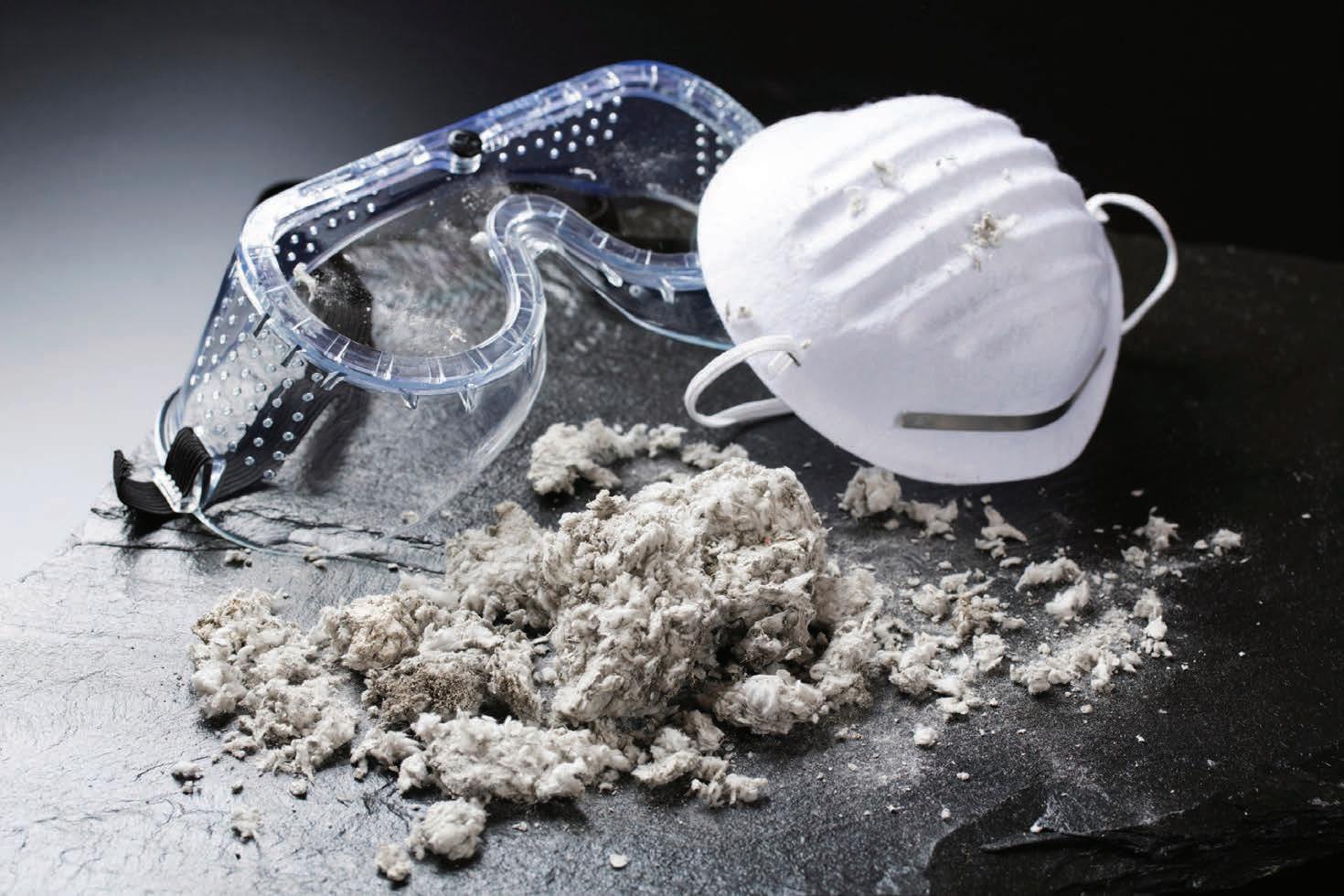
AGRICULTURE FARMING EDUCATION WASTE MANAGEMENT RESOURCEMANAGEMENT
CONSERVATION
MANUFACTURING RESOURCES
ENERGY HEALTH & SAFETY INFRASTRUCTURE
ENGINEERING MINING CONSTRUCTION
QUARRYING AGRICULTURE FARMING EDUCATION
WASTEMANAGEMENT RESOURCEMANAGEMENT
CONSERVATION
MANUFACTURING RESOURCES
ENERGY HEALTH & SAFETY INFRASTRUCTURE
ENGINEERING MINING CONSTRUCTION
QUARRYING AGRICULTURE FARMING EDUCATION
WASTEMANAGEMENT RESOURCEMANAGEMENT
CONSERVATION
MANUFACTURING RESOURCES
ENERGY HEALTH & SAFETY INFRASTRUCTURE
ENGINEERING MINING CONSTRUCTION
QUARRYING AGRICULTURE FARMING EDUCATION









WASTEMANAGEMENT RESOURCEMANAGEMENT MANAGEMENT

SEARCH FOR TOP INDUSTRY TALENT THROUGH OUR JOBS BOARD.
CONNECT WITH ALIGNED CANDIDATES.
BOOST YOUR CHANCES OF FINDING SKILLED APPLICANTS.
SCAN TO CREATE AN ACCOUNT TODAY AND DISCOVER YOUR PERFECT MATCH!
IN AUSTRALIA, demand for advanced sorting technologies in the green waste compost industry is on the rise. Guidelines, such as the Australian Standard 4454, help drive the nation’s commitment towards sustainable waste management practices. Then there are initiatives such as the implementation of FOGO bins (Food and Garden Organics), which means the need for effective automated sorting solutions has never been more crucial.
Operators of composting facilities are constantly being faced with challenges to produce quality clean product. On one side of the coin, customers are demanding compost of increasingly higher quality. On the flip side, the organic waste streams contain steadily rising quantities of foreign particles in the mix.
Machinery specialist, STEINERT, has innovative technologies, such as the UniSort Black optical sorter, which ejects foreign particles out of this structural material to create a pure product for processing facility operators.
“The higher volumes the facilities are predicted to receive by 2030 indicate the industry needs to evaluate what decontamination looks like at scale, and learn from best practices overseas,” said Bronte Abrahams, STEINERT business development manager for waste recycling in Australia.
STEINERT’s waste recycling specialists work alongside green waste processing companies around the world to help address and remedy these key contamination issues. Working together they strive to find solutions to achieve the best quality recyclable materials for green waste recycling facilities.
In the first stages of processing the material, the company offers the STEINERT OHSM (overhead suspension magnets). These are placed above the belt to remove the tramp metal components.
The self-cleaning magnetic separators have a circulating conveyor belt equipped with projections, which remove the ferrous parts attracted by the magnets and allows them to fall into a separate container.
The conveyor belts transport the material to the UniSort Black machine, which will in turn separate out all plastics (including all dark-coloured and black


plastics) as well as the remaining foils and metals.
The UniSort Black sorting system consists of an NIR (near infrared) sensor to recognise detectable plastics, as well as objects that are normally not detectable by means of NIR (such as dark-coloured and black plastics). Both types of material are sorted out during the same run-through – either post- or pre-digestion.
The use of STEINERT’s hyper spectral
imaging (HSI) technology enables the UniSort Black to identify both types of material simultaneously.
A metal sensor can be installed optionally to detect and separate residual metals. Depending on the application, this technology has a throughput rate of 6 to 10 t/h at a working width of 2.8 m; the grain sizes range from about 10-70 mm and from 70-350 mm.
Patrick Lindweiler, STEINERT’s solutions specialist, explains the benefits for our global green waste customers.
“UniSort Black enables them to purify



the structural material so well, that it doesn’t have to be incinerated.
“With this reduction of the incineration costs by up to 90 per cent, and the return of the material into the composting process as a structural material, the marketing of the qualityassured products pays off for the operator.”
The combination of STEINERT technologies help remove more than 98 per cent of the foreign particles in the material, ultimately sorting out the unwanted contaminates such as metals, broken glass, stones and ceramics.
Recognising excellence across the waste and resource recovery sector. Sponsorship opportunities are now available for 2024.
www.wasteawards.com.au





CRAIG Cosgrove and Simon Toal founded Skala Environmental, a dedicated business unit of Skala Australasia, in October 2023 in order to provide a tailored and personalised approach to equipment and systems sales within the resource recovery industry.
Skala Environmental is the Australian partner for Eggersmann GmbH recycling equipment, as well as Screenpod Design & Manufacturing. These partnerships enable Skala to supply an array of specialist products to the resource recovery industry. This equipment includes, but is not limited to, mobile and stationary shredding, screening, and turning and separation solutions. Add a range of portable industrial vacuums and it is easy to see why the company is set to make its mark in the industry.
Industry in general is becoming increasingly competitive and processors are seeking efficiencies through industry-leading technology, increased reliability and performance.
“Processors are looking for an enduring and trusted supplier that provides them with confidence in technical support, parts availability and responsive aftersales relationship,” said Cosgrove.
“The relationship starts at the factory and in response our OEM partners are also committed to continuous improvement, refining their processes and systems with diagnostics for remote maintenance, more seamless parts logistics chains and more interactive communications systems to capture and share experience and learnings across the industry. Proactive maintenance, training and technical support go a long way to improving productivity.”
People buy and deal with people they know and trust. This has been the foundation of Skala’s business, according to Cosgrove. He said It takes its longterm relationship’s seriously and views its customers as business partners. The company spends time and effort
getting to know its clients’ businesses, personnel, individual requirements and constraints. This enables it to tailor its service and solutions to best support the client’s business.
Cosgrove also said that Skala is a family-owned business whose team are skilled at what they do.
He believes that a smaller business generally offers far more flexible and personalised approach. This is especially the case when it comes to after-sales service and support.
“It’s more than just the equipment. It’s the after-sales experience that is important,” he said. “That is part of what you’re buying into. And I think words like that get bandied around a lot these days by everyone, but that’s how you build relationships with your customers. It’s a very hands-on industry, and that’s one of the reasons why we started Skala Environmental because that’s what we can offer – that personal experience.”
Cosgrove also points out that he sees

Skala as a niche company. While many companies do claim that, he says its strategy has been deliberate – starting from the back-up service it gives to the brands it represents in Australia. One aspect he likes is the fact that he and Toal like to get stuck in when it comes to the pointy end of the business.
“There are two directors, and we’re very hands-on all day – every day,” he said. “We’re on the coalface with everyone else – we’re out with the customers, understanding what they want, listening to them, and coming back with solutions. That’s how we roll. That’s the only way in this business because everyone’s always doing something different, and you have to show that little bit extra to clients as it’s a unique business that we’re in.”
As well as supplying equipment, the company also designs, installs, and commissions turnkey recycling plants. As well as organics and C&D, it has the expertise to help those in the C&I and municipal solid waste arenas.
That’s what FOGO is all about.
FOGO is the right thing to do and hard to get right. There’s much to consider, plenty of challenges to overcome.
Launching and maintaining a successful FOGO service requires solid preparation, a range of skills, accurate data and learning along the way. You might be needing help to lighten the load or boost confidence in strategic choices.
Our quality team is ready to support your FOGO and GO needs.
Developing and reviewing strategy
Designing trials
Educating and engaging communities
Auditing new and existing programs
Conducting cost benefit analysis
Benchmarking service models
It’s never too early or late to make FOGO great. Give us a shout.
(02) 9907 0994
admin@aprince.com.au
www.aprince.com.au
BONNIE LU says one of the marked differences between the Australian waste industry and her homeland China is that the latter doesn’t have the room to landfill so has to find alternative ways of getting rid of waste – usually by burning it.
Having graduated from Guangdong University of Technology, China with a Bachelor of Engineering, Lu made her way to Australia in 2019 where she completed her Masters in Civil Engineering at the University of New South Wales. It was here that she first noticed the differences between the two countries and thought landfilling would not only be a good solution for waste in
is just like digging a hole and putting all the waste into it and then call it a day,” she said.
“But when I got into it, I’ve found there are a lot of technical aspects like engineering lining systems and leachate systems. There was so much that I didn’t know about it. I’m still learning.”
Lu fell into the waste industry after she landed a role with Kimbriki Environmental Enterprises as a project engineer. It wasn’t what she originally set out to do when she started her degree. Initially she was studying structural engineering, looking into such things as the load bearings on beams and slabs. She has found waste a lot more interesting.

“I’ve encountered a lot of problems that need solving and new experiences every day in the industry,” she said. “With structural engineering, it felt like I would encounter the same types of problems every day.”
Not that she won’t be putting aspects of structural engineering background to the test in her role in the waste/resource recovery sector. Her day-to-day role is as varied as it is interesting and although she has admitted there is a lot of to learn, Lu also brings a lot to the table. Some days she will stay in the office to do design and reporting work or be out in the field and see how construction is going on various projects.
Kimbriki mainly recycles about 80 per cent of the timber, plastic, steel and other waste streams that make its way to its Northern Beaches location. It
“We can hopefully resell it at a relatively low price,” said Lu. “We’ve got an Eco-House and Garden, and we also have primary and high school visits where students come and learn about successful organic gardening techniques and how to implement sustainable living ideas into your everyday life. The students also do a bus tour of the site to see our recycling operations and how we operate our landfill.”
Lu said there is nothing like a typical day for her. There is a lot going on all the time.
“I do some environmental work like landfill gas monitoring and leachate monitoring,” she said.
“For landfill cell construction, I need to do the construction quality control and construction quality assurance for the lining material.
“Also, we recently did a project that called the Clean Water Diversion



system can reduce the amount of surface water that is likely to get into our cell.
“I’m also starting to take over some project management for some small jobs onsite like planning and organising projects and resources.”
Lu also does a lot of inspections when it comes to erosion and sediment control.
“I go around the site and see if there are any environmental problems and talk to people in our operations team about how to find solutions to those problems,” she said.

Like 99 per cent of people who are in the waste/resource recycling industry, Lu is concerned about the lack of education in the wider community about how to recycle, reuse and reduce. Working at a landfill, she is aware of not only the limitations of the site – even though they are adding new cells – but also that the amount of land available to landfill is running out.
“We really need to teach people what to reuse, reduce and recycle so we can control the things that go into the landfill itself,” she said. “For example, I saw your article in Inside Waste about coffee cups going into the recycling bin. I know lots of people think coffee cups can be recycled but most can’t.”
Even though Lu has worked in the landfill cell side of the business, she feels there is more to learn in that aspect and wants to have a deeper dive into how it is managed.
“I would like to get inside the landfill cell design side of the business,” she said. “I would like to learn more about how it works and what we need to focus on when designing a cell and how to continuously improve our site masterplan.”









Thurs 20 June, 2024
WOMEN IN INDUSTRY NOMINATIONS ARE NOW OPEN. Now is your chance to nominate an industry leader who you believe is advocating for positive change and deserves to be recognised.
The Women in Industry Awards recognise outstanding women leaders from across Australia’s industrials sector.

WASTE management has many issues facing it, making innovative equipment and technological solutions more crucial than ever. In pursuit of creating a sustainable waste management system, Wastech Engineering presents a tool that transforms a waste operation, the X50 vertical baler.
The unit is a large vertical baler designed for industries demanding a highquality machine that can handle large volumes of waste materials. It features an efficient and effective mechanism that operates with a fast cycle time and generates large waste bales.
Additionally, the machine is capable of minimising large waste volumes.

With a focus on reliability, the X50 has a good press force and heavy-duty compaction for most types of materials such as paper, cardboard, aluminium cans, PET bottles, plastic, and textiles. This not only optimises storage space but lessens the waste collection rate, saving transportation expenses and carbon emissions.
It’s not all quantity; the X50 also features good quality. The hydraulic
system of the baler ensures the machine’s high capacity and long machine lifetime. With functionality and accessibility in mind, the unit has a unique design that allows easy access to electrical parts for fast repair and maintenance. Contrary to its size, the X50 has low operation noise and can be easily installed due to its low overall height.
The baler has cutting-edge technology that delivers real-time data – the BRA-IN Monitoring System. This intelligent monitoring solution allows users to monitor baler performance, maintenance checks, detect equipment errors, and track real-time data like fill levels, consumables, and collection rate. The BRA-IN System not only improves performance and efficiency but also optimises operations and minimises direct and indirect waste handling costs.
In collaboration with Bramidan, Wastech Engineering stays true to its goal of providing businesses and industries with innovative equipment like the X50 vertical baler and technological solutions such as the BRA-IN Monitoring System.


THE newest pieces of machinery and technology from Komptech CEA will be on display at IFAT Munich 2024.
IFAT Munich prides itself as the world’s leading trade fair for water, sewage, waste, and raw materials management. It is a solution platform, a networking event, and a knowledge hub. IFAT Munich brings together international industry representatives from politics, business, and science.
As the largest trade fair for the water, wastewater, recycling and municipal technology sectors, the event offers ideas and innovative solutions for industrial and municipal challenges. It also provides hundreds of exhibits visitors
can experience in action and up close. This is what makes this trade fair for environmental technologies versatile and results-oriented.
It’s why Komptech CEA will be in attendance.
It’s an opportunity for attendees to see what Komptech CEA can offer local governments and other businesses when it comes to their water, wastewater, recycling, and technology.
It doesn’t matter whether you are a global player or a mediumsized company, a large city or a small municipality, IFAT Munich places a clear focus on recycling and disposal for private-sector and municipal waste

management companies. The aim is to identify solutions to close raw material cycles and further advance the circular economy.
Which strategy is effective? Which process is suitable for which need? Which vehicles and machines are particularly energy-efficient? Businesses will get answers and tailored solutions for every process across the various material flows, including smart collection, new sorting and processing methods, energyefficient materials handling, and AI-based software solutions.
Komptech CEA will be displaying a range
of new machines, while also providing further details about their availability in Australia.
Komptech CEA will also be offering a range of site tours for those interested in the inner workings of the organisation, both before and after the event. One set of such tours includes a visit to the Komptech head office at Frohleiten (northern Austria) and Factory II, the production facility in Ljutomer (northeastern Slovenia), before the IFAT event. There will also be an opportunity to visit a working site near Frankfurt.
WASTE resource recovery is a punishing application that tests a truck’s capabilities and chassis day-in and day-out.
Longevity for the job is critical for businesses such as VTG Waste & Recycling, which is taking out the trash in the Northern Territory.
Providing a range of recycling and environmentally conscious solutions, VTG offers regular services from recycling and commercial waste disposal through to specialist handling of hazardous waste, construction and manufacturing waste, medical and e-waste and more.
The Top End’s tropical climate and rough roads in some locations presents a unique challenge for VTG, calling for equipment that performs in all conditions: be it hot, wet, dry, dusty or up to the grille in mud.
They’ve found the FYJ 300-350 truck has a tranche of features – from a rock-solid cab chassis and a big payload, through to a comfortable and safe driving experience.
VTG Waste & Recycling managing director, James Prakash, said that Isuzu trucks have proven to be an excellent brand match for the business. With assistance from equipment experts CJD Isuzu in Darwin, the company has brought in two of these heavy haulers to help it with collection and compaction.

“We find Isuzu is best suited to our environment and needs, particularly the tough conditions of the Top End where we have two seasons, wet and dry, and a whole lot of humidity to consider,” said Prakash.
“We currently have 14 Isuzu trucks and another three on order, so we’ll have 17 by the end of the year... We’re trying to get to the point where we run exclusively Isuzu.”
As one of the heaviest models currently on offer from Isuzu, the FYJ is specified with a GVM of 30,000 kg (28,000-kg onroad legal limit) and GCM of 45,000 kg, equating to fewer trips and better efficiency for a business like VTG, which is out on the roads all day.
The FYJ’s 8x4 platform is underpinned by a six-cylinder 6UZ1-TCN engine, which hits its maximum at 257 kW (350 PS) at 2,000 rpm and offers 1,422 Nm of torque at 1,400 rpm, so there’s no concerns over pulling power.
A load-sharing twin-steer front axle, plus six-speed Allison auto transmission, work in tandem to support smooth operations. Combined with an ISRI 6860/875 air suspension driver’s seat, it makes for a comfortable experience up in the cab for the drivers.
With the VTG team having come together from across the waste industry, Prakash
said its goal was to create a communityminded business that treats staff and clients with respect.
This means disposing of waste in a sustainable and environmentally ethical way, providing advice and guidance for those struggling to find the right methods, and the implementation of green protocols.
“We understand that part of keeping the best employees in the business is giving them the right tools for the job and having Isuzu trucks is a huge part of that,” he said.
“They’re reliable, easy to use and easy to work on, and you know they just keep going.”
PETERSON horizontal grinders are renowned for their robust design, versatility, and efficiency in processing a range of materials. These machines come equipped with a variety of features that make them suitable in waste management, forestry, and recycling applications.
They have a long history in USA where Peterson has a commitment to excellence, invests in research and development, and is constantly pushing the boundaries of what its grinders can achieve.
Peterson has four-model range of horizontal grinders; 2710D/4710D/5710D/ 6710D that are available as either wheeled trailer or self-propelled track and with the same features that are:
• The upturn three-stage grinding process, which provides material fracturing and consistent product, particularly to produce lighter mulches.
• The impact release system that incorporates a patented air bag that provides uniform grinding and protection
for contaminated feedstock.
• The impact cushion system, which is a second line of defence of urethane cushions and shear pins, which help protect the mill from catastrophic damage in the event of a severe impact from contaminants in the feedstock.
In Australia, Peterson horizontal grinders are typically powered by highcapacity Caterpillar Tier III engines, which provide the necessary power to drive the grinding mechanism and handle tough materials with ease. They feature adjustable screens or grates, allowing operators to control the size of the output material. This flexibility is crucial for meeting specific requirements in various industries, such as producing biomass fuel or creating mulch for landscaping. They are also equipped with advanced remote control systems allowing operators to adjust settings, monitor performance, and troubleshoot from a distance, improving safety and operational efficiency.
The Peterson flails and chippers were

the prime focus for Komatsu Forest, but the horizontal grinders now make up nearly half of the Peterson sales in Australia – the Peterson 2710D is the most successful model with 24 units being sold with the 5710D not far behind. Despite the modest size of the grinder market in Australia, Peterson’s range has emerged as the dominant force.
“We’re extremely pleased with the Peterson’s success and have been somewhat surprised by the growth of the Peterson Grinder sales”, said Brett Jones, Managing Director Komatsu Forest.
The horizontal grinder is not just a machine, it’s a game-changer. Its ability
to process large volumes of waste quickly and effectively made it an indispensable tool in the battle against environmental degradation. Landfills dwindled, and recycling rates soar as these grinders find their way into industries committed to a greener, more sustainable future.
Peterson Pacific Corp based in Eugene, Oregon became a subsidiary of Astec Industries in 2007. Astec has enjoyed steady success over time with the company acquiring 20 subsidiary brands across the forestry, road building, aggregate, and other industries. It’s now in the process of standardising all subsidiaries under the ASTEC brand.
MAGNETIC drum separators are essential tools for efficiently removing unwanted iron particles from large volumes of materials and for recovering valuable metals. Eriez offers these a series of separators in a range of sizes in its drum line, from 36 to 84 inches in diameter and 36 to 96 inches wide, making them customisable for many recycling operations.
Drum separators are available in permanent and electromagnetic designs. The main difference between electromagnets and permanent magnets lies in how they generate and retain magnetism – electromagnets rely on electricity, and their magnetism is temporary, while permanent magnets have an inherent magnetic field that persists over time.
Electromagnetic drums’ insulated wire coils are built using a solid-steel core to produce a deep magnetic field to reach ferrous materials from the burden. They require consistent DC power from a rectifier control. These drums

use a rectangular core to maximise the magnetic field and provide the best possible coverage across the width of the separator.
All electromagnet drums are prone to the same problem by the nature of their design – heat loss. As the magnet heats up throughout the day, it can lose as much as 30-35 per cent of its strength. Ferrous recovery will be best in the morning when

TRICON has added the Arjes Titan 950 and Impaktor 250 Evo to the company’s range of products. These machines are designed to tackle diverse waste streams with efficiency and precision.
Whether waste management professionals are navigating large-scale projects or require nimble solutions for on-site processing, Tricon offers
flexibility. Both the Arjes Titan 950 and Impaktor 250 Evo are available for hire and purchase, empowering industry experts to tailor their equipment choices according to the unique demands of their projects.
This adaptability positions Tricon as not only a provider of cuttingedge technology but also a partner
the magnet is in the “cold condition.” After a few hours of operation, it is not unusual to see a recovery drop-off due to this design constraint. These drums typically reach their steady state (in hot condition) after two to three hours of operation.
Eriez permanent rare earth (P-Rex) drum magnets are some of the strongest drum magnets available in the industry. Using a permanent rare earth magnetic
circuit, the P-Rex is nearly 40 per cent stronger than its electromagnetic counterpart. Because the P-Rex uses a permanent magnetic fixture, the magnetic field is uniform and extends from edge-to-edge, whereas electromagnetic drums’ magnetic field is stronger directly under the core and weaker towards the edge. Additionally, the permanent drum offers a wider pickup zone, enabling an efficient collection of ferrous material. Permanent drums also maintain more strength throughout the transfer and carry-over zones.
With its permanent magnetic circuit, the P-Rex can collect heavy and hard-toretrieve ferrous objects, including large spherical objects commonly referred to as “meatballs,” which are considered difficult to capture magnetically. Its strength allows it to pick up these large pieces of magnetic material from nearly twice the distance, making it a good option for deeper burden depths found in scrap metal processing and recycling operations.

committed to meeting the evolving needs of the waste management landscape.
In a world where environmental sustainability is paramount, Tricon’s dedication to delivering efficient and eco-friendly solutions is part of the company’s DNA.
The Arjes Titan 950 and Impaktor 250 Evo are not just machines; they represent a step towards a greener and more sustainable future for waste processing. Tricon’s emphasis on sustainability extends beyond the machinery itself; it encompasses a holistic approach to waste management, acknowledging the industry’s
responsibility to contribute positively to the environment.
As the waste management industry continues to evolve, Tricon consistently pushes the boundaries.
By providing these state-of-theart solutions, Tricon enables waste management professionals to navigate challenges with confidence, knowing they have a reliable partner committed to their success.
In doing so, Tricon Equipment cements its role as a beacon of progress in waste processing, shaping a future where efficiency, sustainability, and cutting-edge technology converge for the benefit of our planet.


DEMAND for recycled aggregate is increasing as the construction industry trends toward more sustainable construction practices. To help producers meet this demand, the McLanahan UltraSCRUB modular scrubbing plant offers a packaged solution for producing clean, recycled coarse aggregate from a C&D debris stream.
The UltraSCRUB consists of a primary scrubbing module featuring either a coarse material screw washer or log washer, depending on the application, followed by an aggregate sizing screen. The scrubbing module features rotating paddles to break down and remove deleterious material as well as a spray bar for rinsing liberated contaminants from the sound aggregate. It also features rising current to assist in the removal of light fractions such as plastics and lightweight organic material. The horizontal sizing screen is available in a double- or triple-deck option to separate up to four different product sizes.
The plant features a modular support structure with generous standard access arrangements and optional walkway sections, as well as adjustable static or radial conveyors in a range of lengths and widths. Optional overband magnets can be added to the discharge ends of the conveyors to remove ferrous tramp metals ahead of product stockpiling. The UltraSCRUB is pre-wired and pre-plumbed with a single connection point for the water lines for rapid on-site deployment or relocation.
Optionally, a pre-screening module can be added ahead of the primary scrubbing module to remove sand or reject oversize
to improve the scrubbing process. A transfer sump and pump can be added to collect and move the sand fraction for furthering processing. An optional trash screen is available to dewater the lightweight contaminants.
Available in various sizes and configurations, the UltraSCRUB provides flexible scrubbing for removing deleterious materials as well as final sizing options for the clean aggregate products. With the UltraSCRUB, producers can transform C&D waste into a valuable resource for use in new construction projects.
The Ultra SCRUB is distributed in Australia by Lincom Group.




the Damage Defense system is suitable for any Vermeer tub or horizontal grinder operation that may encounter metal contaminants mixed in with its incoming materials.



IN large projects such as land clearing or mulch production, grinders are handling large materials like whole trees and large stumps, and metal contaminants can easily mix in with incoming materials. This can cause damage to machinery, which can be costly to repair and result in delays to the project.
Contractors seeking protection from such damage would benefit from partnering with a supplier that not only offers powerful equipment, but goes above and beyond in protecting
machinery and ensuring success.
With 950 hp and in a 41,730 kg weight class, the HG6800TX horizontal grinder is Vermeer’s biggest, most powerful grinder. The engine is C-rated for increased engine life while providing the ability to power through materials with minimal operator interaction.
This kind of powerful machinery necessary for larger projects also rises to the challenge of an increased risk of metal entering the hammermill.
Equipment protection systems – such

as Vermeer’s Damage Defense system – reduces the likelihood of metal being ground, offering contractors added security and safety.
The Damage Defense system is a Vermeer-exclusive product and an optional add-on, offering additional protection for grinders by using exclusive technology to sense metal vibration in the infeed and the mill – reducing the likelihood of damage caused by metal contaminants.
Fully compatible with the HG6800TX,
If metal makes it into the mill while the machine is grinding, the grinder control will be alerted and the Damage Defense system will automatically initiate the shutdown process, cutting reaction time and boosting onsite responsiveness.
If a contaminant is detected, the system automatically reverses the infeed system and immediately disengages the clutch to protect the machine, reducing the likelihood of metal being pulled into the mill and preventing damage to the grinder.
The Damage Defense system can be integrated into a grinder’s control system for maximised effectiveness –mitigating the need for tools or a manual reset. Further enhancing its flexibility and efficiency, the system’s sensitivity settings can be easily adjusted, enabling contractors to quickly adapt to specific jobsite conditions and helping reduce nuisance shutdowns.
Built and supported by Vermeer, the Damage Defense system comes with robust components and is protected by a weather resistant box.
When using Vermeer’s HG6800TX coupled with the Damage Defense system, contractors can have the confidence to tackle bigger projects without worrying about contaminants causing project delays or costly equipment damage.
The system gives contractors peace of mind and is backed by Vermeer Australia’s experienced and knowledgeable environmental equipment specialists.
WASTECH Engineering upholds its mission to be a contributor to the nation’s circular economy. The company solves waste management problems through innovative and technological solutions driven by the goal of environmental sustainability. Enter the McCloskey Environmental Track Shredder ESS-300.
The ESS-300 is a tracked, primary, single-shaft shredder that can shred materials with effectiveness and reliability.
A feature of the ESS-300 lies in its versatility. It is equipped with an aggressive multi-tooth cutting shaft to meet the needs of sites and facilities whose waste inputs can differ largely in size, material, and ability to shred.
The machine is designed with a hydraulic side opening door for easy chamber access and quick change of available mesh options, allowing the shredder to suit many different applications.
With its compact design, this equipment also features a fuel-efficient hydraulic system and a variable-speed main conveyor to provide optimum and maximum performance.
The McCloskey Environmental ESS-300 embodies efficiency and sustainability at its core.
Beyond its technical features, this equipment can handle a diverse array of waste, from wood and concrete to tyres and green waste. This shredding machine eliminates the need for

multiple pieces of equipment and streamlines the waste management system for a more efficient and smooth operation.
The unit is also equipped with an intelligent control system and user-friendly hydraulic controls to
enhance convenience and elevate the overall experience.
Wastech Engineering is Australia’s licensed distributor of the shredder. The partnership has led to the development and manufacturing of innovative waste management equipment.

























Evening Sir, Solutions, solutions, solutions. That never-ending quest to find an answer to questions that come up constantly in the resource recovery space. Why do people still dump asbestos when they know the irreparable damage it can do to the environment and people? Why don’t the states and territories have a little parley and ensure everybody is on the same page regarding landfill levies?
Why do the wonks in Canberra seem to come up with unrealistic deadlines for meeting recycling targets? By jove, any targets! The answer is, who knows what is going on in people’s minds when these decisions are being made.

Which brings me to Barcelona. Eh? I hear you say. What does this tapasfriendly, football-crazy (not rugger, Sir, the one they play with the feet), independent-minded, siesta-loving town have to do with the waste industry?
Plenty. They’ve devised a great idea –paying councils to supply quality food organics/garden organics (FOGO) to processing facilities. While some states and the federal government down here provide the odd incentive, they are sometimes limited offers that are inconsistent or not offered often enough.
who ensure impurities are generally separated. As you would expect for such a scheme, a few carrots are being dangled – but just like a pinata, there can be a sting in the tail if certain criteria are not met. Councils must ensure that
only a certain level of impurities are found. Financial penalties kick in for any impurities above the set standard, so councils are incentivised to get it right.
Can such a model work in this Great Southern Land or even in Blighty?
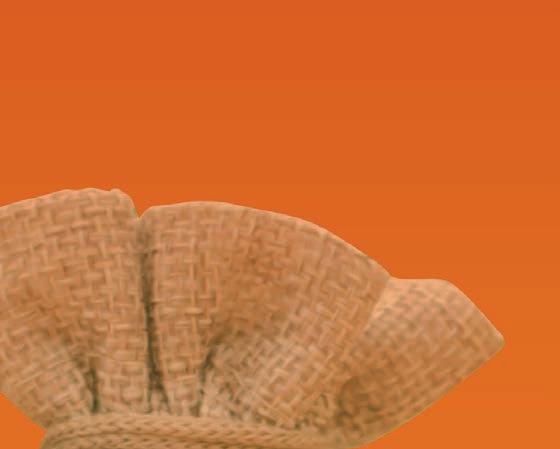

Which brings me to my main point.


How do they fund this model? Why they take monies earned from landfill levies and return them to those councils
Probably. But it takes more than wishful thinking. I see it as a win-win situation for all concerned. The facilities get to process clean FOGO to be resold. The landfill levy is being used for what it was initially mooted to do. Local government gets to something right for the environment while not adding to residents’ rate burden, and there is a diversion away from landfills.

Why wouldn’t it work here, you might ask, Sir. The aforementioned lack of harmonisation within the states and territories is always a good starting point. However, probably the main sticking point, roadblock, stuck – use any superlative you like – is the lack of will by policymakers and their political masters. In our former colony now known as the United States, they have the expression ‘pork barrel politics’ whereby the great unwashed are told their tax dollars are being collected for X, Y and Z reasons, only for those monies to find their way into a senator or congress person’s pet project for which it was never intended.

I’m not saying the politicians down here do that – all the time – but they like nothing but a good reason to collect taxes (think alcohol and cigarettes) under the auspices of funding the detrimental side effects of such endeavours, only for the funds to find their way into unrelated matters.
Here’s hoping politicians take into account where the money should be spent next time they make these decisions. JB


















Our solutions are based on e cient and environmentally sound in-house technology, and cover the entire life cycle of an Energy-from-Waste facility. Our proven technologies have been part of more than 700 plants worldwide. As a global leader in energy from waste we are proud to be able to say: We deliver. Check our references.
Waste is our Energy www.hz-inova.com
Oslo, Norway Dublin, Ireland London, United Kingdom Rockingham, AustraliaKomptech CEA is a leading supplier of machinery and systems for the treatment of solid waste through mechanical and mechanical biological treatments, as well as the treatment of biomass as a renewable energy source. Komptech CEA is proud to provide innovative solutions for handling waste and biomass.
Komptech CEA’s extensive range of products cover all key processing steps in modern waste handling. At Komptech CEA the focus is always on innovative technology and solutions ensuring maximum bene t to the customer. With local representation throughout Australia and National Parts Distribution Centre Komptechg CEA has the expertise and aftersales support to con dently support your business needs.
Like to know more? why not speak to one of our team today?




Where Function Meets Technology

A slow-running, single-shaft shredder suited to all types of waste.
Less Fuel, More Power
Ideal for shredding all types of wood and green cuttings.


Screening with a Star
Makes waste wood and biomass processing highly e cient.

Robust and Reliable
Combining the practic proven virtues of its predecessors with new solutions for even greater performance.
The Ideal Combination of Performance and Design
With a sturdy frame, powerful hydraulics and large drum, the Topturn X is ready to handle any work situation.

Enhancing the quality of the recyclable output.
Providing e ective removal of plastic lm from screen over ow.

